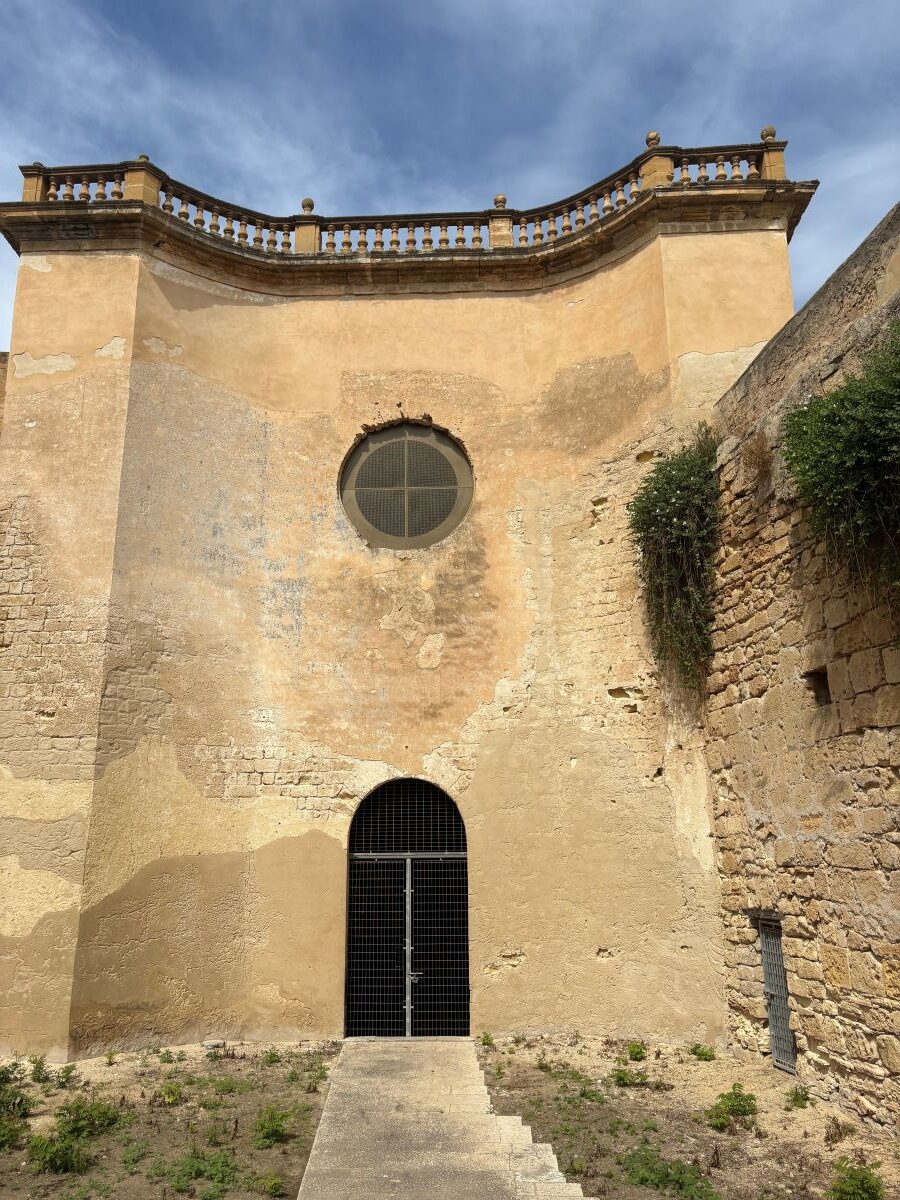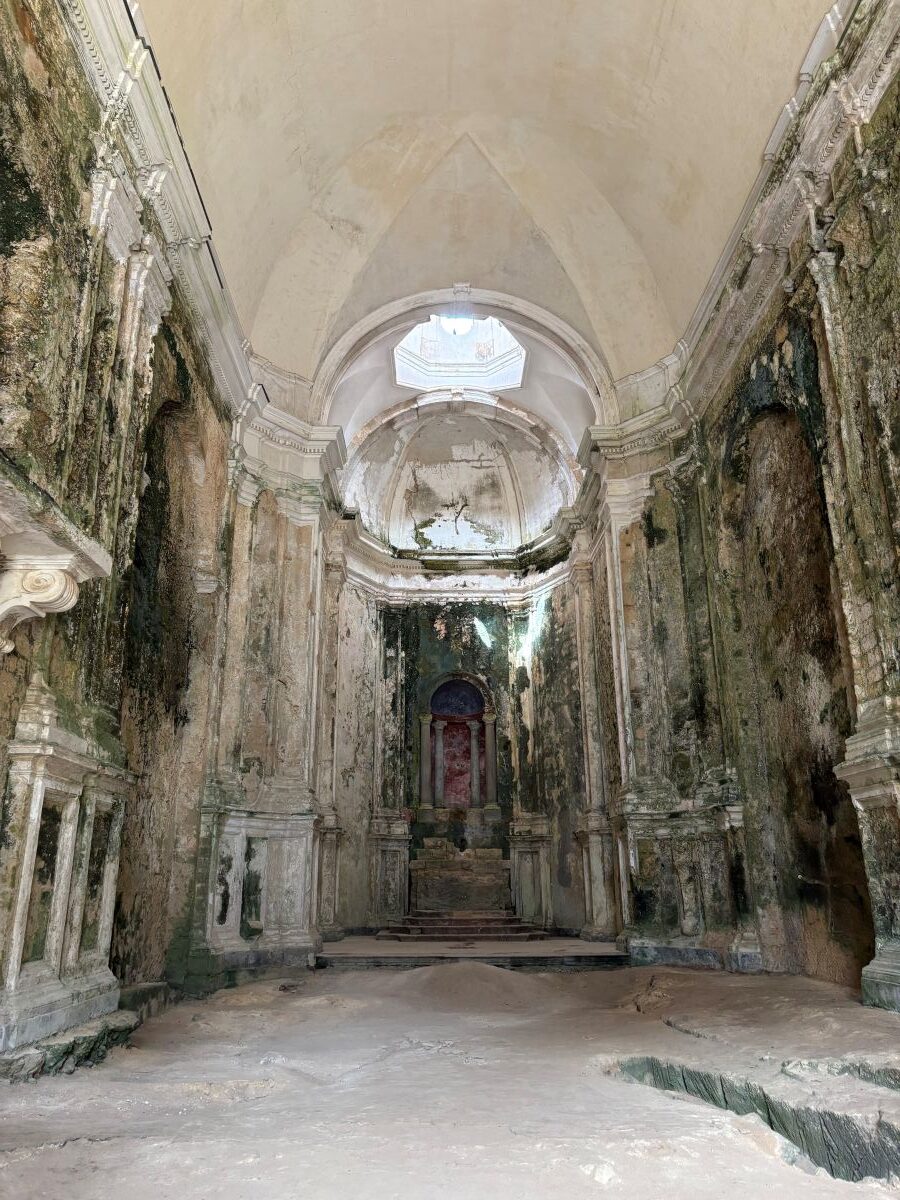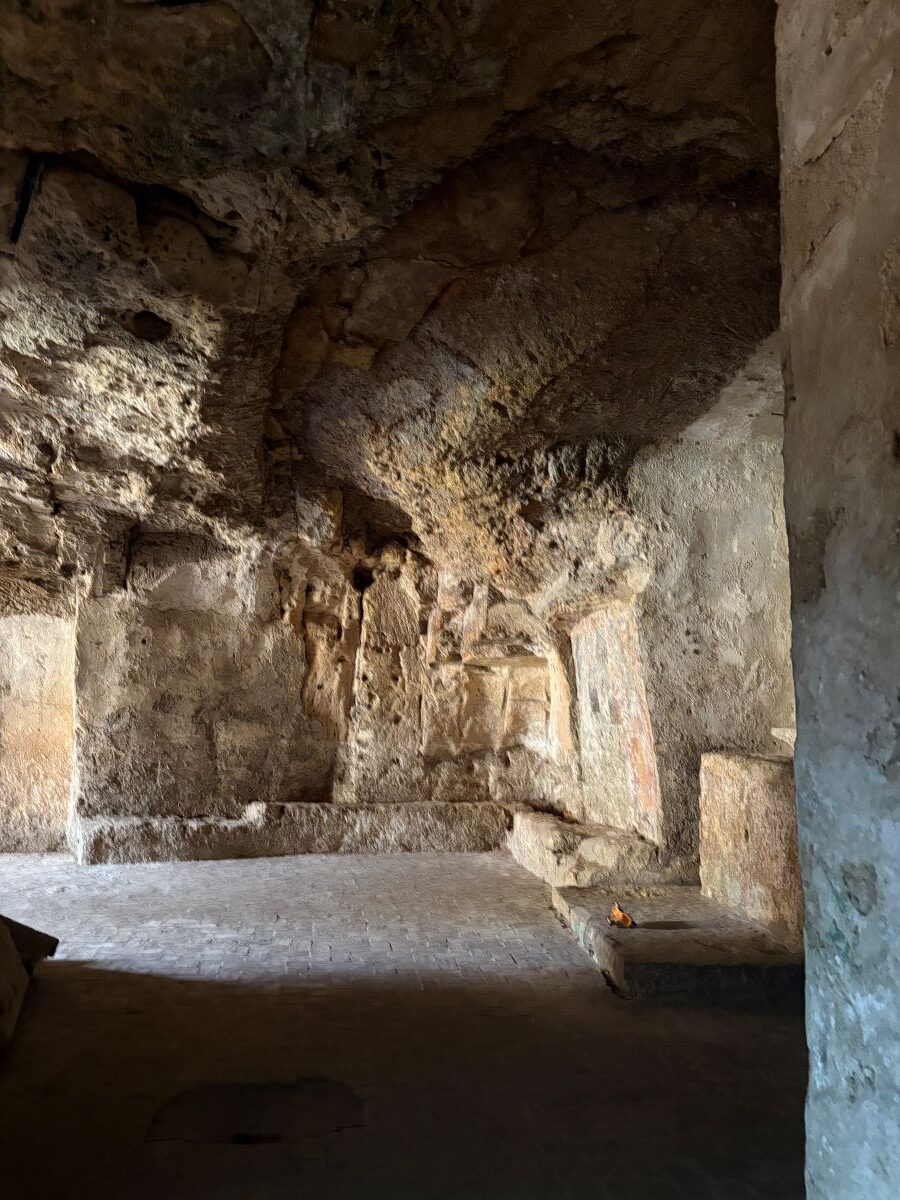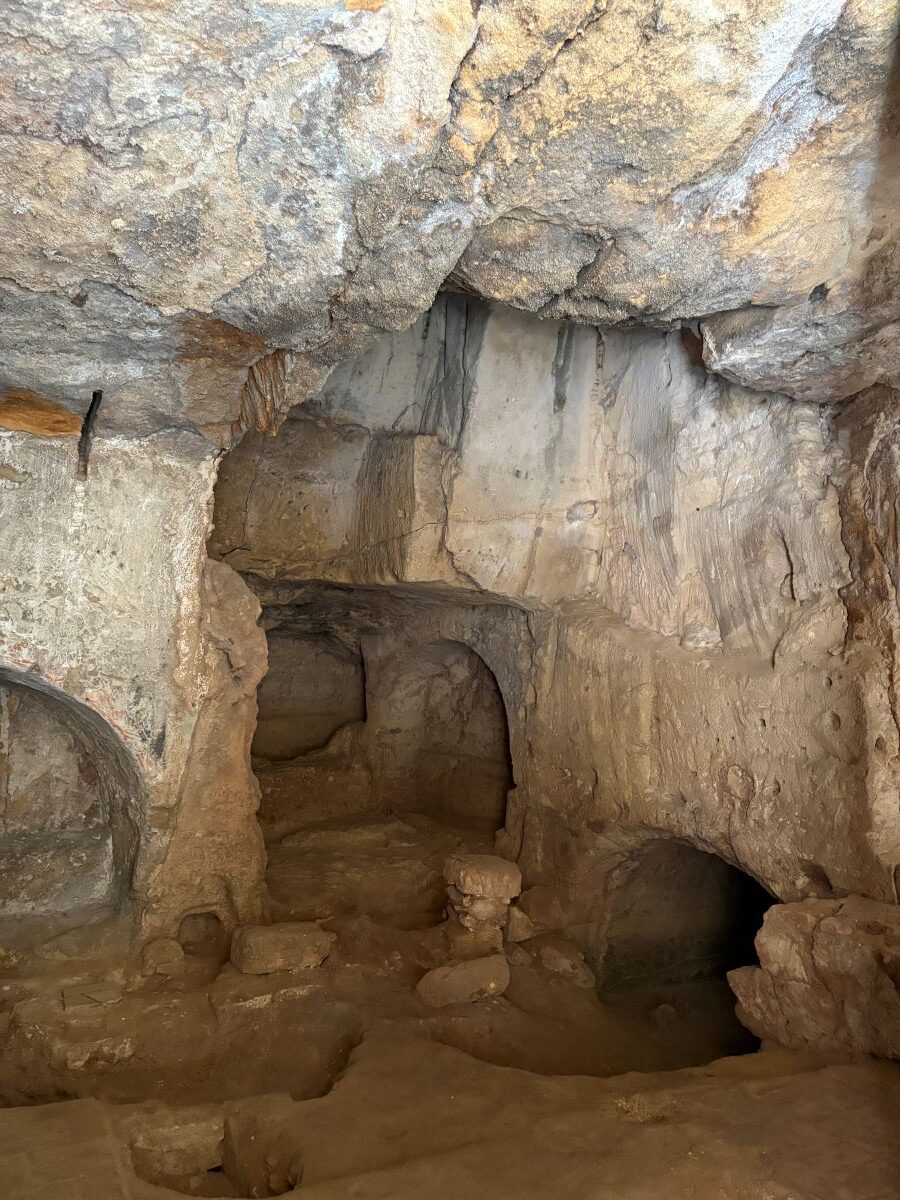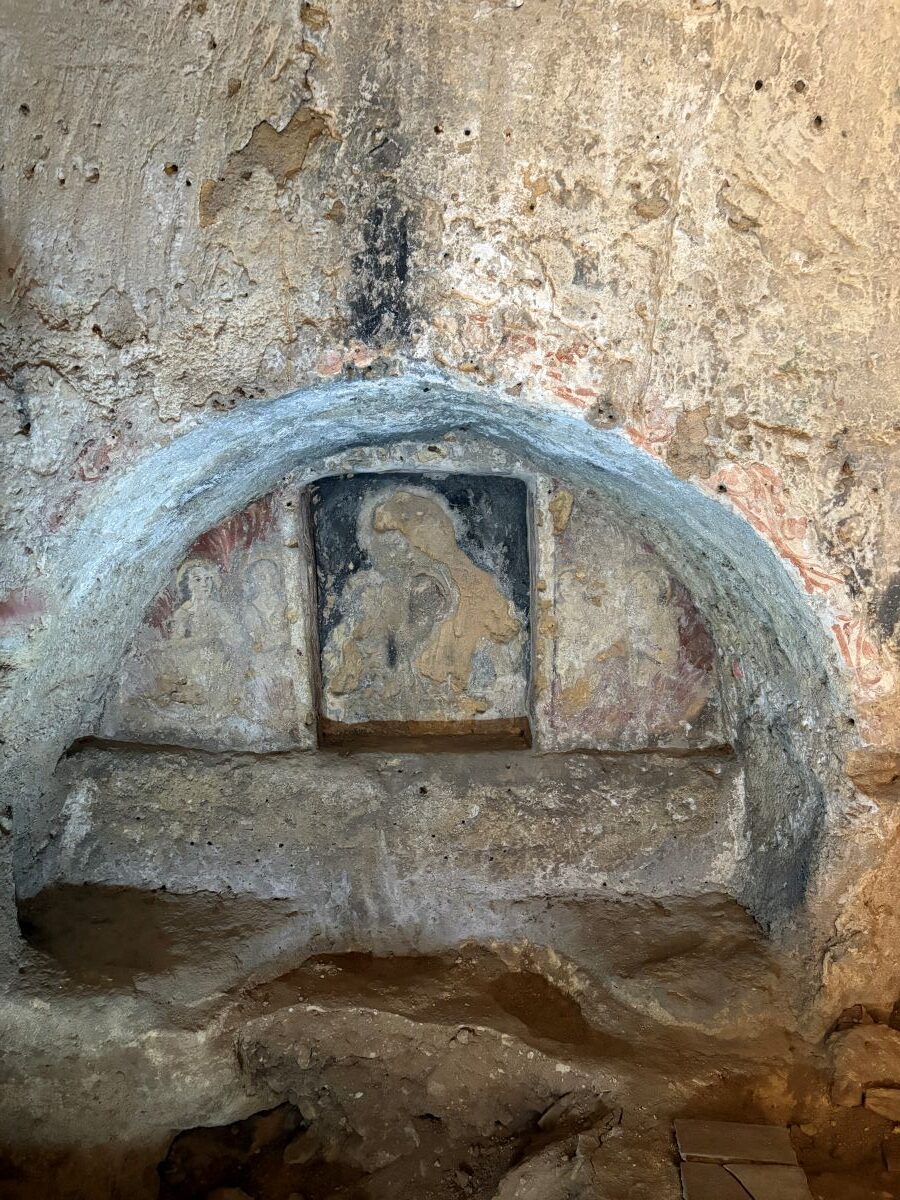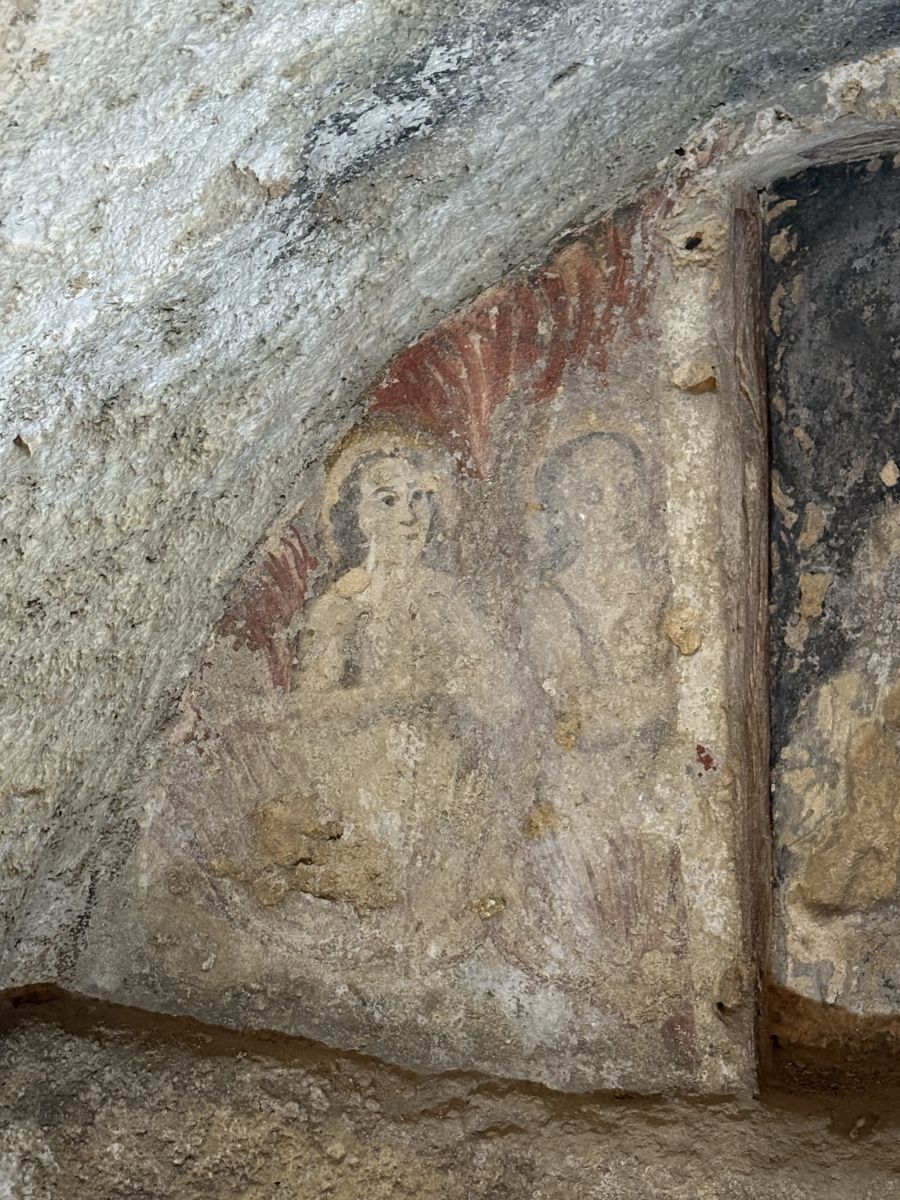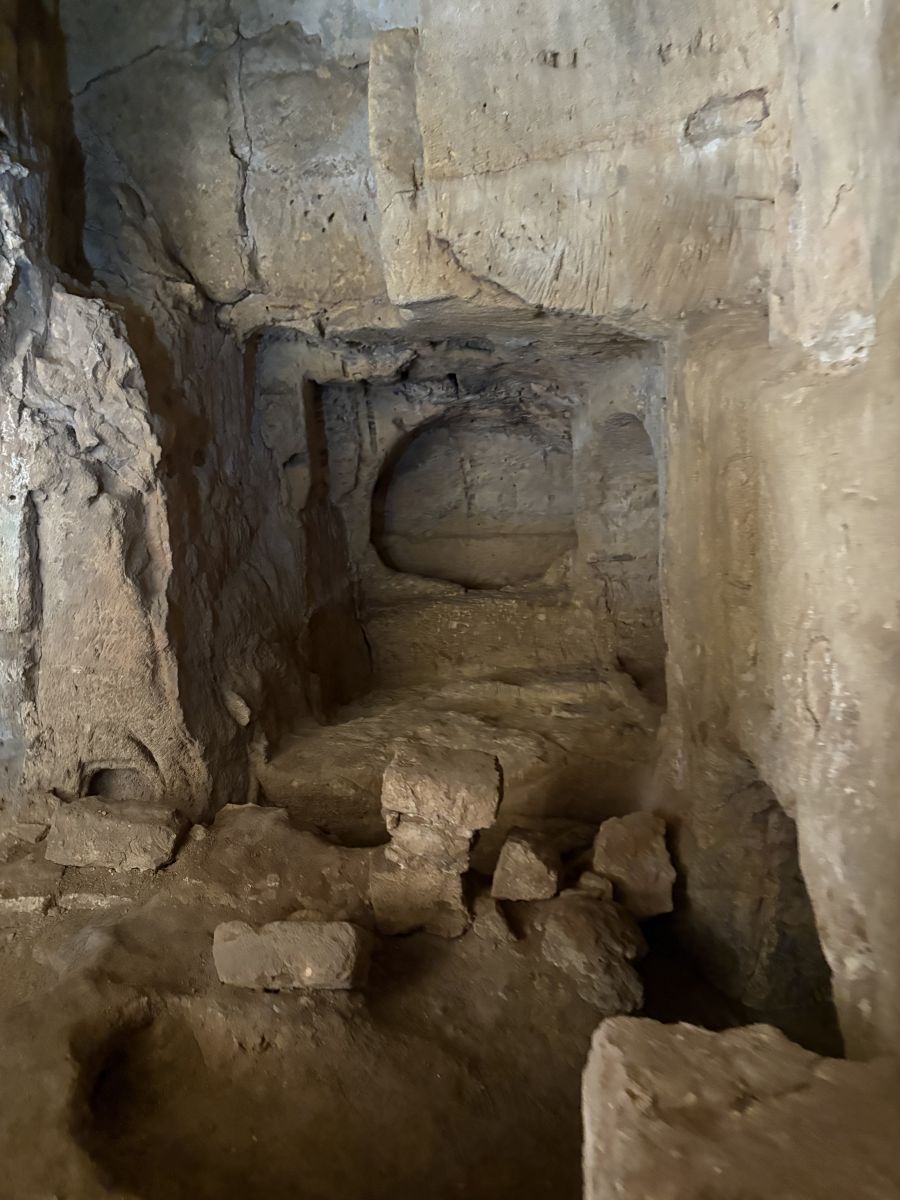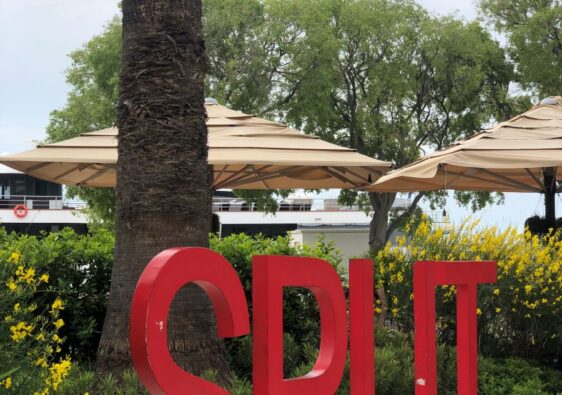Marsala has grown on me. The longer I stay in this average working-class Sicilian city, the more I appreciate the lack of tourists and authentic experience. I have had to dig deep to find the richness of the beauty here. For it does not fall into one’s lap as it does in other destinations. Don’t miss Marsala’s best kept secrets that should most definitely be on your radar. Buckle up, get a cuppa, this is a long one.
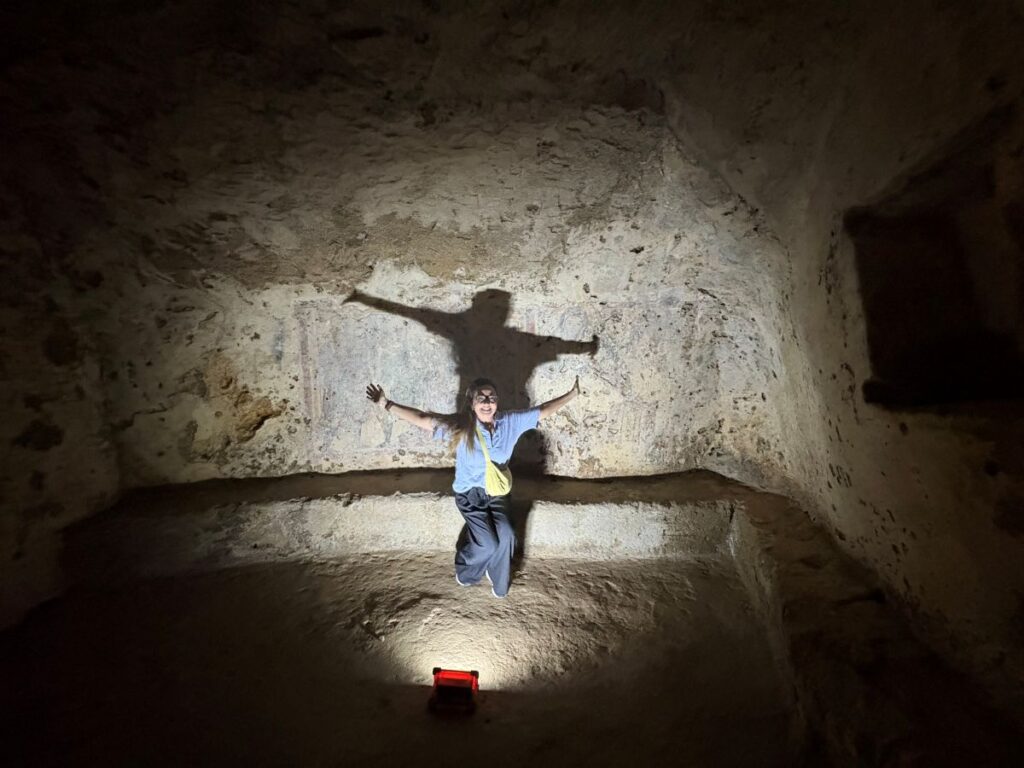
Brief History
Marsala is the fifth largest city in Sicily and the biggest in the province of Trapani. Long before the current municipality though, was an ancient one, a Phoenician city called Lilybaeum. In 409BC, the Carthaginians sent over a contingent from Africa, to conquer the Greeks in Selinunte. They landed on the farthest western point in Sicily and settled there. It is this ancient place that is buried deep underground, below current day Marsala.
When they Romans conquered Lilybaeum, they also created their own city and this too lays hidden underground.
Besides the archaeological park with its museum and outdoor area of a dozen or so sites, there are a few more, two specifically, that are entirely incredible. These are what I will show you today. Entry into both must be pre-arranged and I’ll share details of how to do this at the end.
The Hypogeum of Crispia Salvia
Quite possibly, the best kept secret in Marsala is this underground burial chamber. Located on Via Massimo D’azeglio, it cannot be seen from the street. When the modern building that is there now was being constructed, this mystical place was discovered. All that can be seen from the outside is a worn sign. Walk to the left of the modern apartment complex towards the rear, and you will see a simple glass door. Enter here, meet your contact person and begin the adventure.
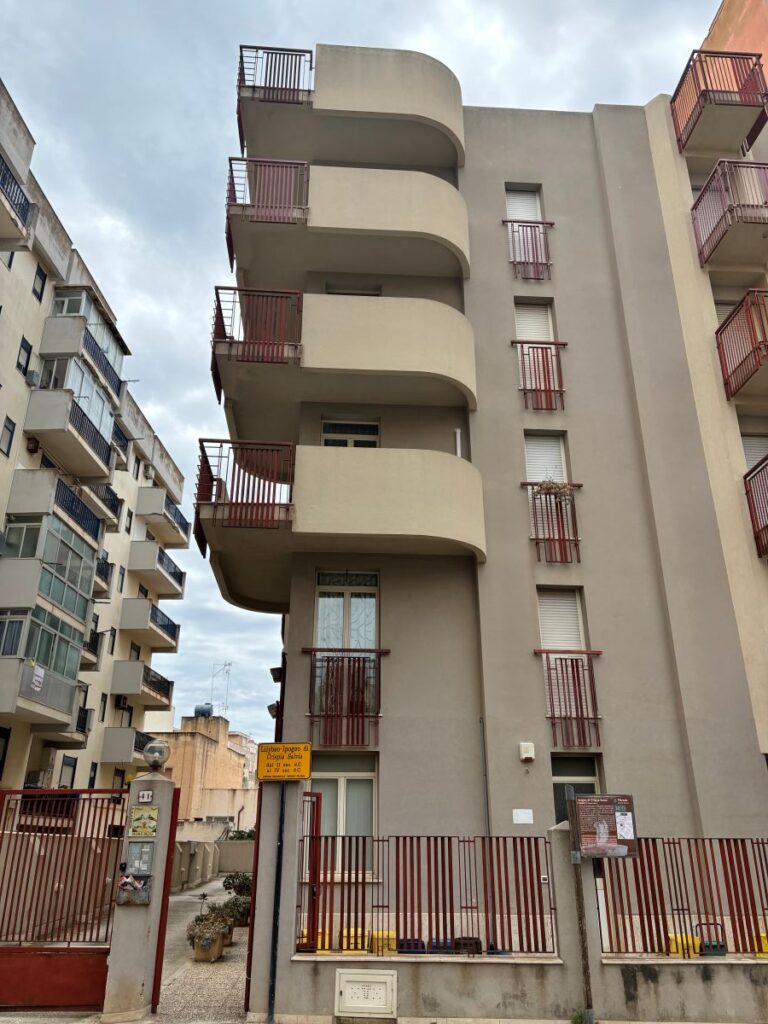
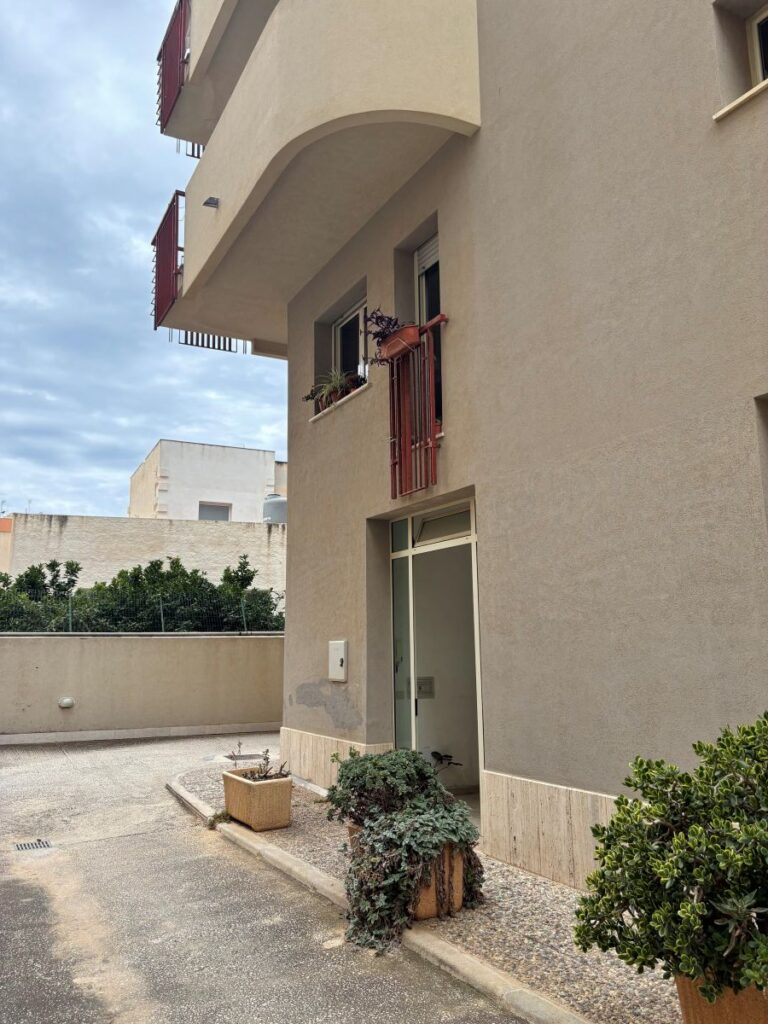
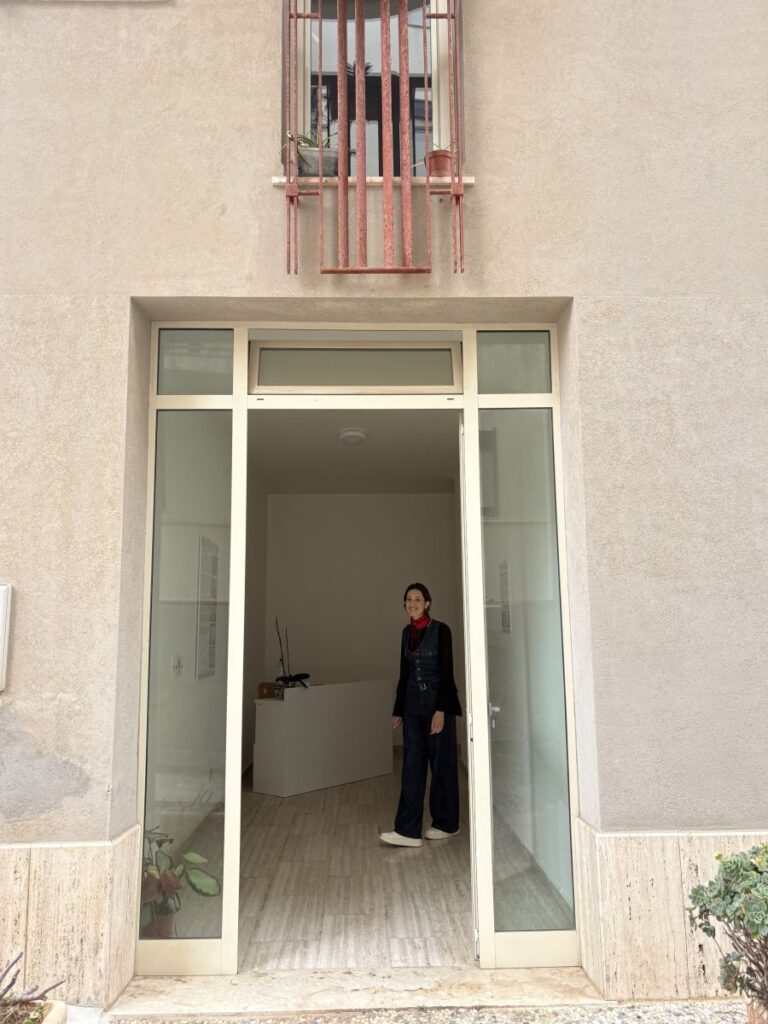
This day I met with Sarah. She spoke a little English and was able to provide some valuable information. Following her lead, I carefully climbed down a narrow set of steep stone stairs and into an underground cavern.
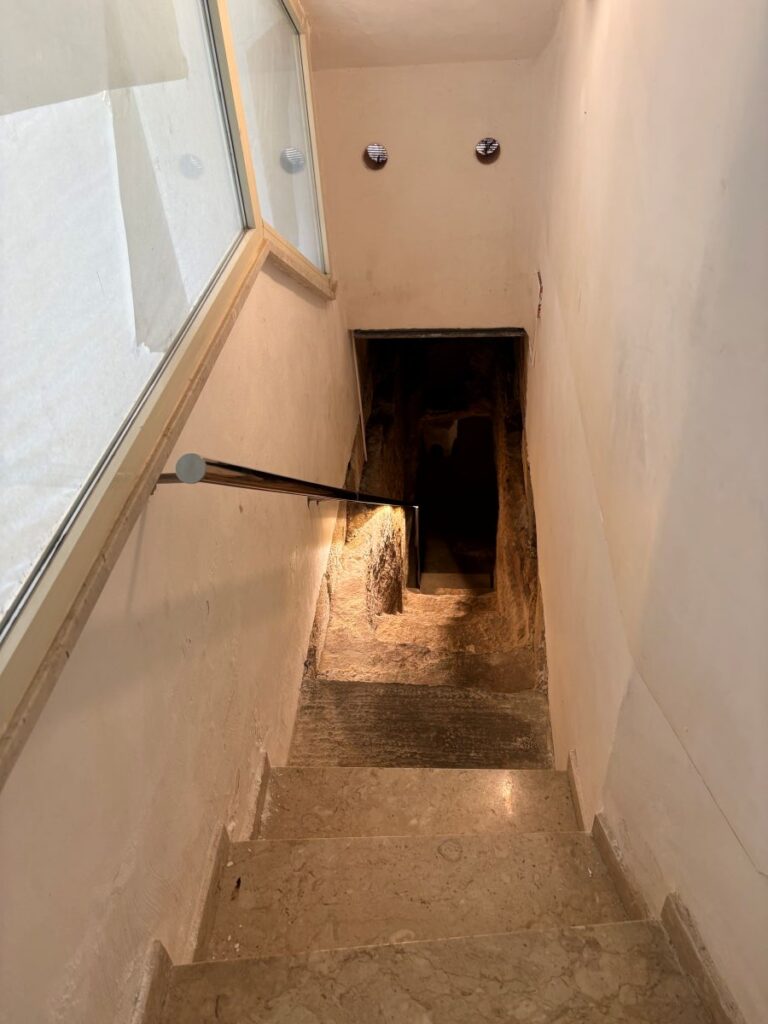
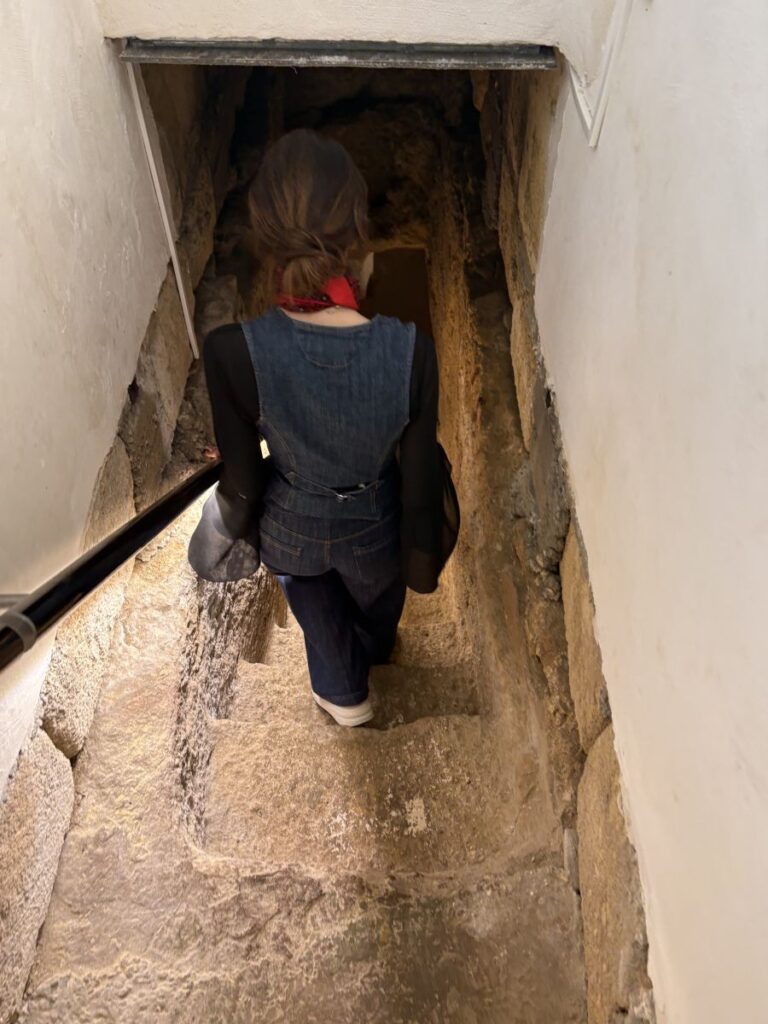
What You Will See
I was instantly in awe. Before me, surrounding on all four sides, are bright and exquisite frescoes. The burial chamber is dedicated to a 45 year old Roman woman named Crispia Salvia. We know this from a Latin inscription above her tomb that was made for her by her husband of 15 years.
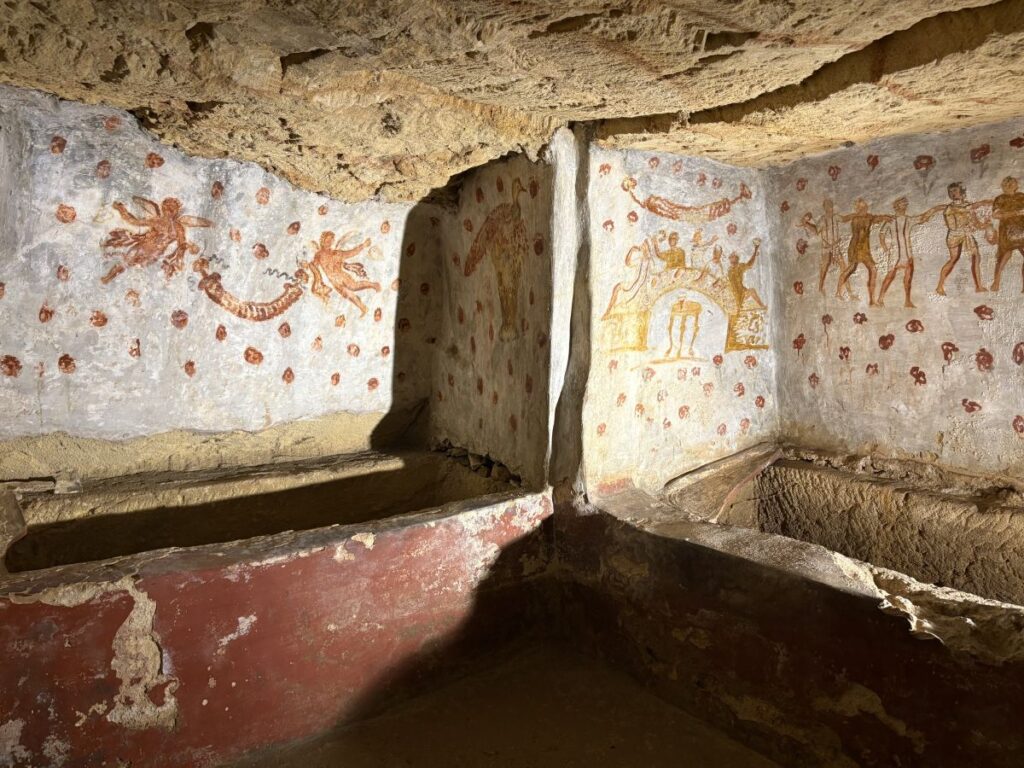
There are five other tombs along the sides of the chamber and it is assumed that one of these may be her husbands. This cavern was dug into the stone in the 2nd century AD. It is part of the larger necropolis of the ancient Phoenician and Roman cities. At the centre of the plaster floor is a slightly raised area with a stone altar. And on each side of this, near the tombs are shallow holes, for the purpose of liquid offerings.
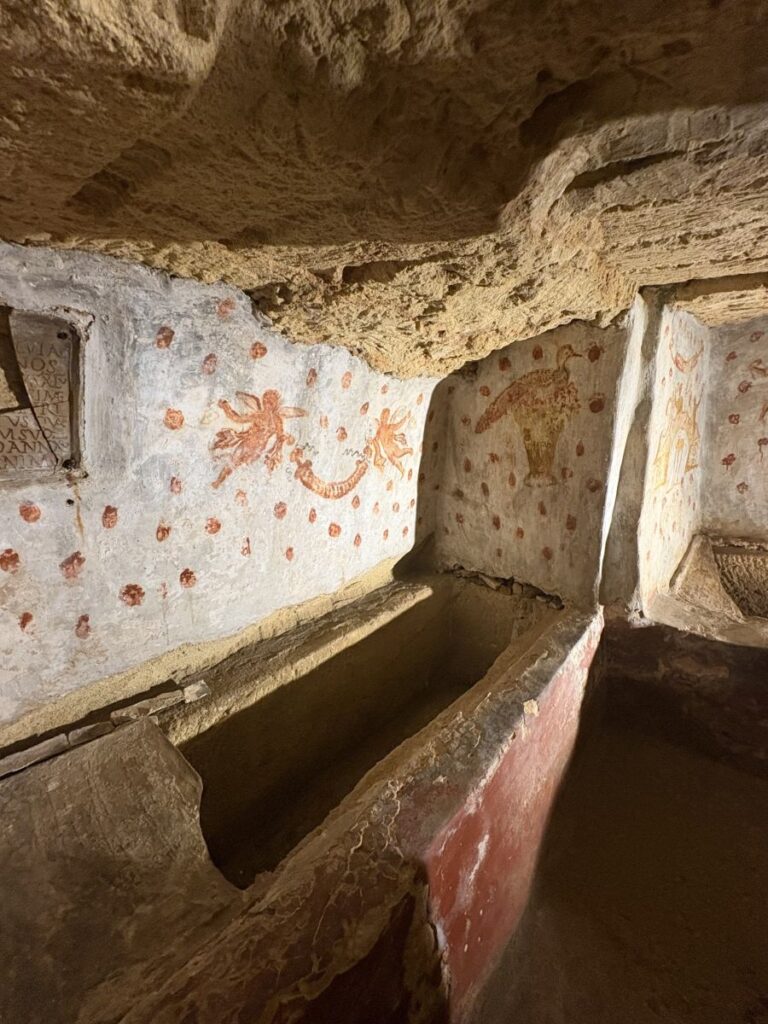
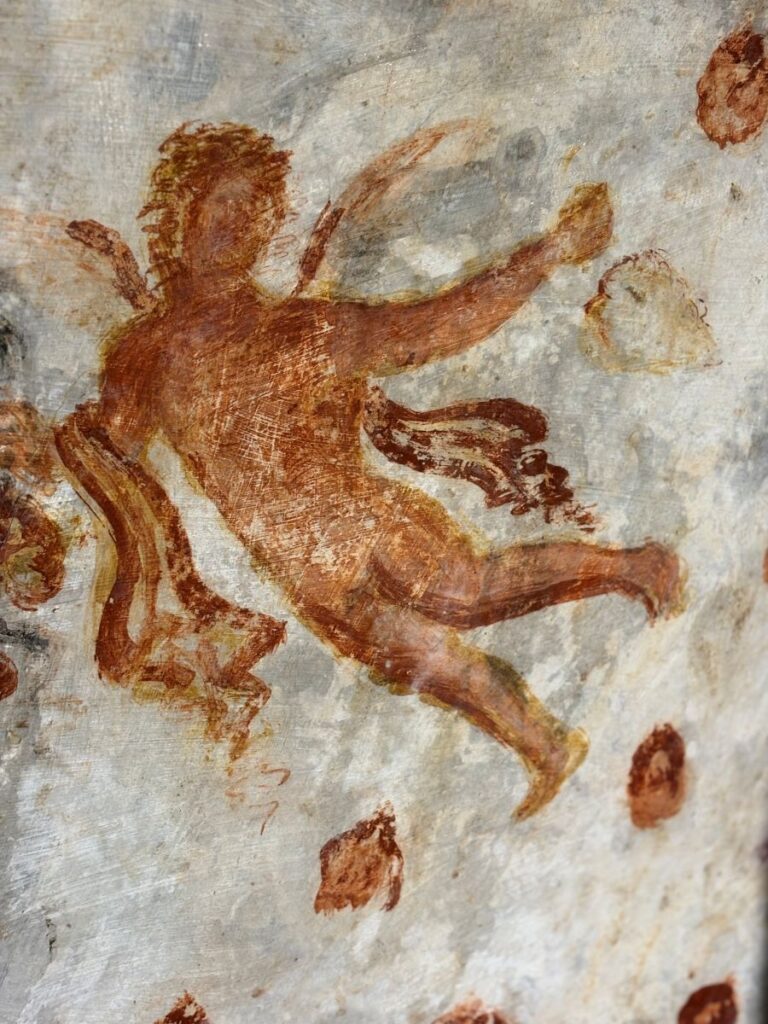
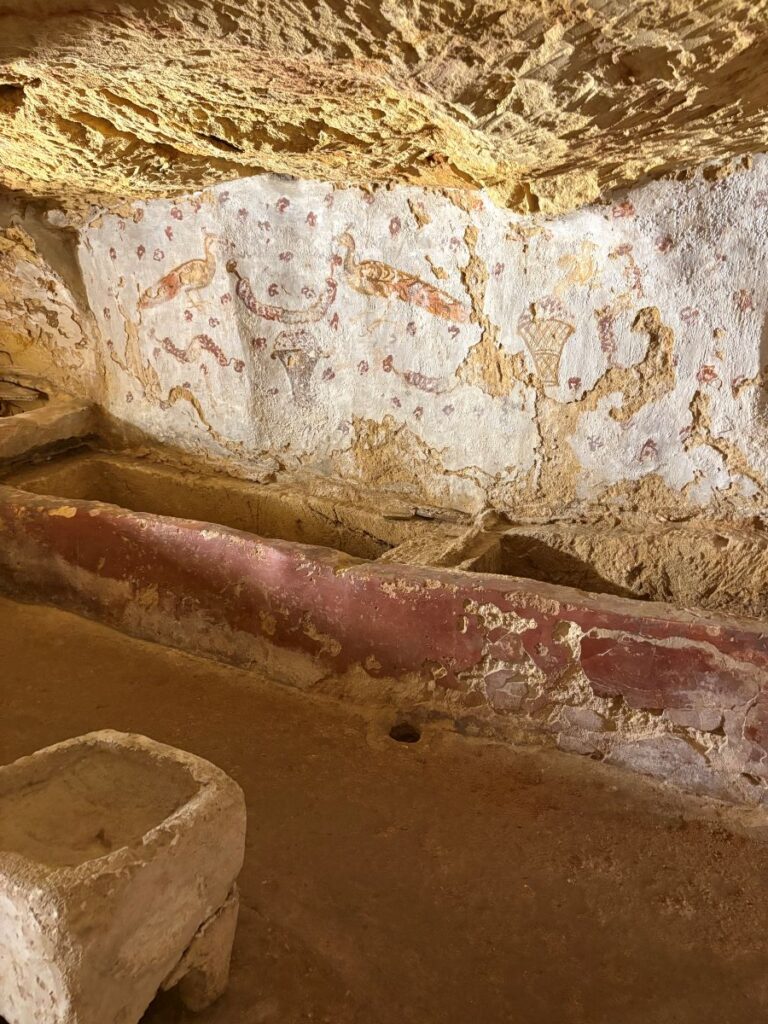
The Frescoes
The most revered fresco is to the right of Crispia’s tomb. Here we see a lively funeral banquet complete with dancers and musician. Each person is holding one glass of wine and on the table before them, is a single glass. Sarah tells me it is presumed this glass was for the deceased.
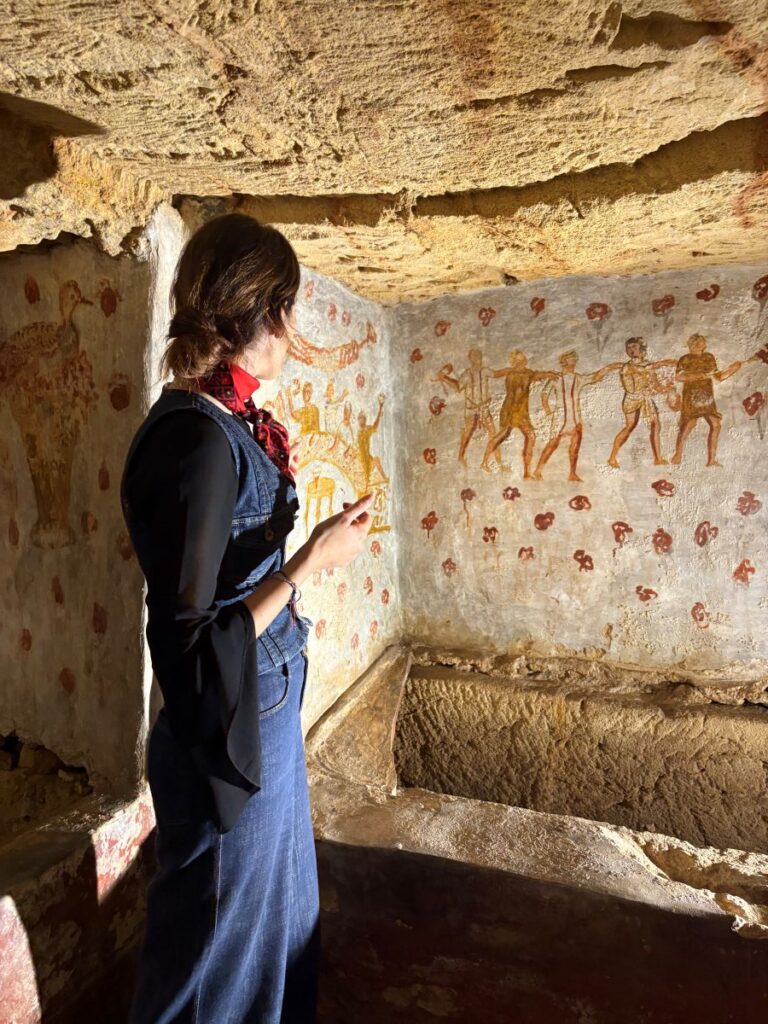
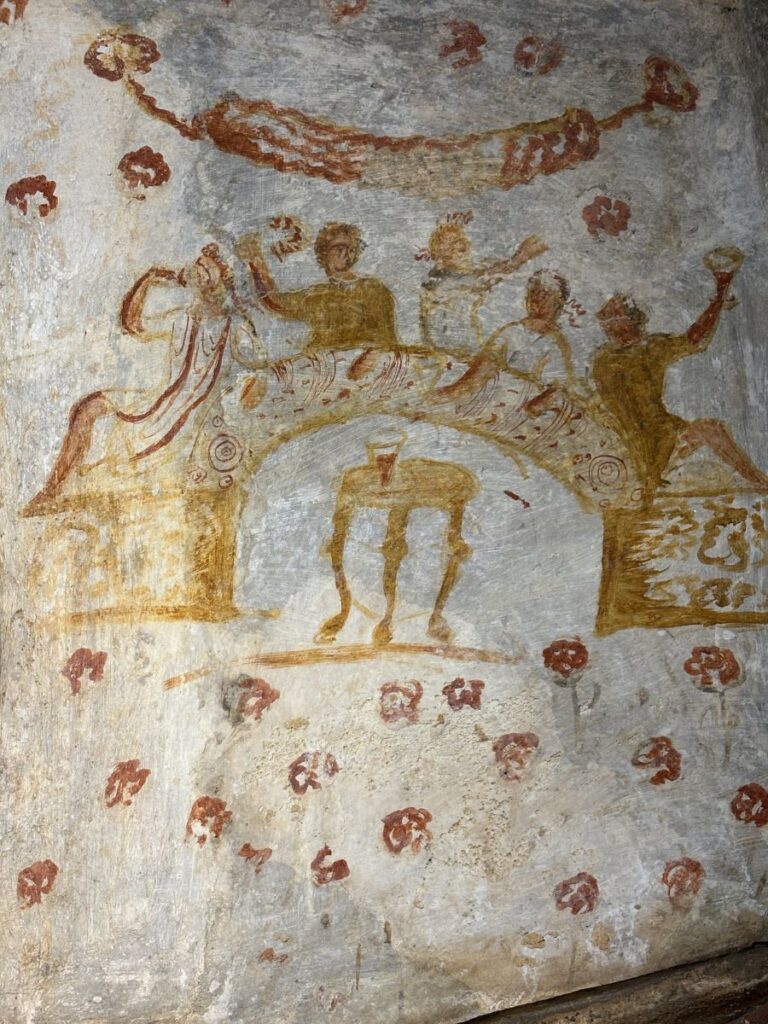
On other walls are peacocks, both male and female, hundreds of roses and cupids holding garlands. The vividness of the colours is extraordinary. The feeling down inside here is cramped; I can barely stand straight without my head touching in places.
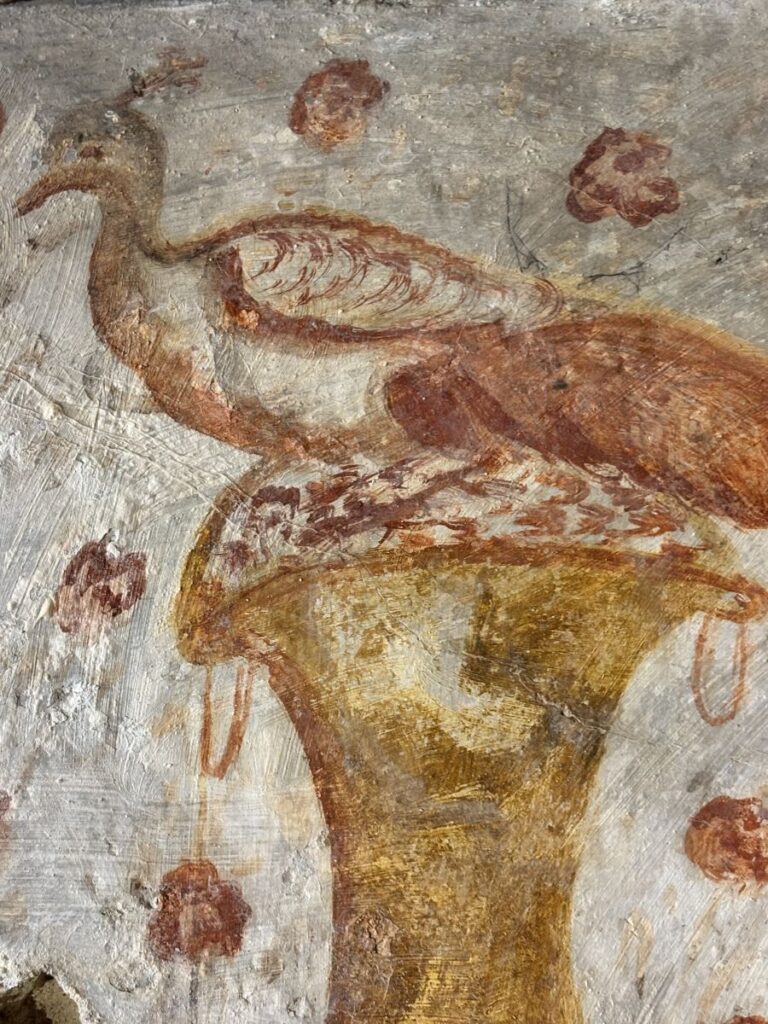
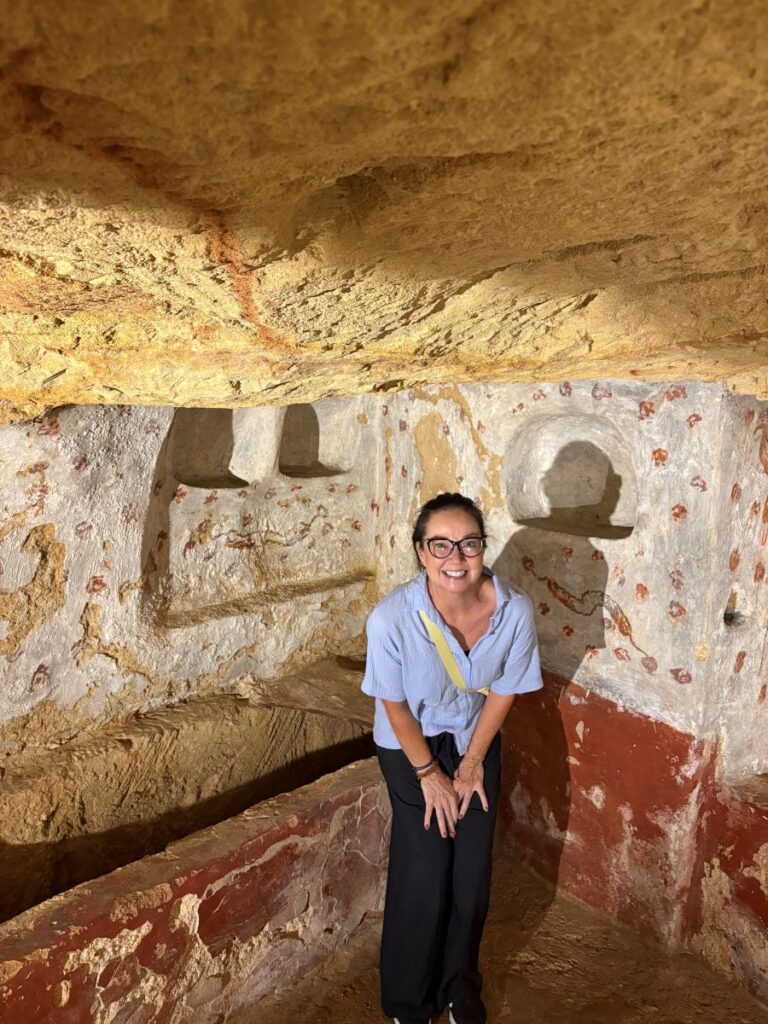
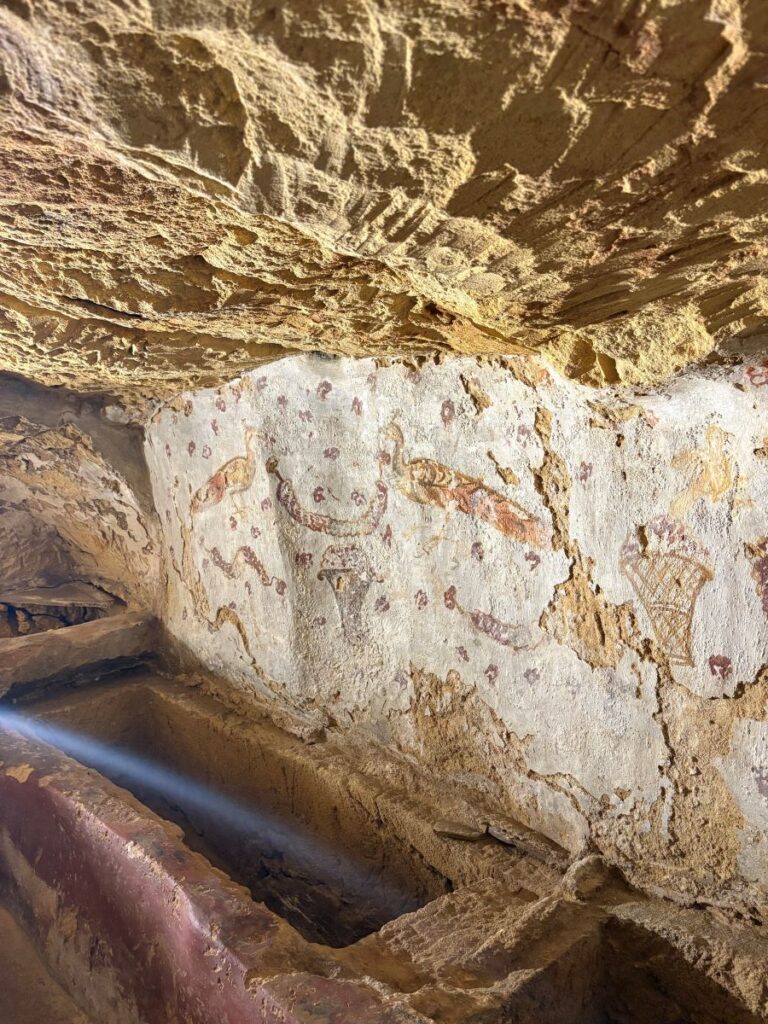
The air is thick and stagnant, the feelings are both claustrophobia and mystical, enchanting. This place is the singularly best ancient Roman tomb I have ever seen in my life.
Santa Maria Della Grotta
The second best kept secret in Marsala is this one. As I approach on foot, I see the partial remains of a derelict church with a huge pile of garbage dumped in front. I meet my contact Maria, and she unlocks the gate for me to enter.
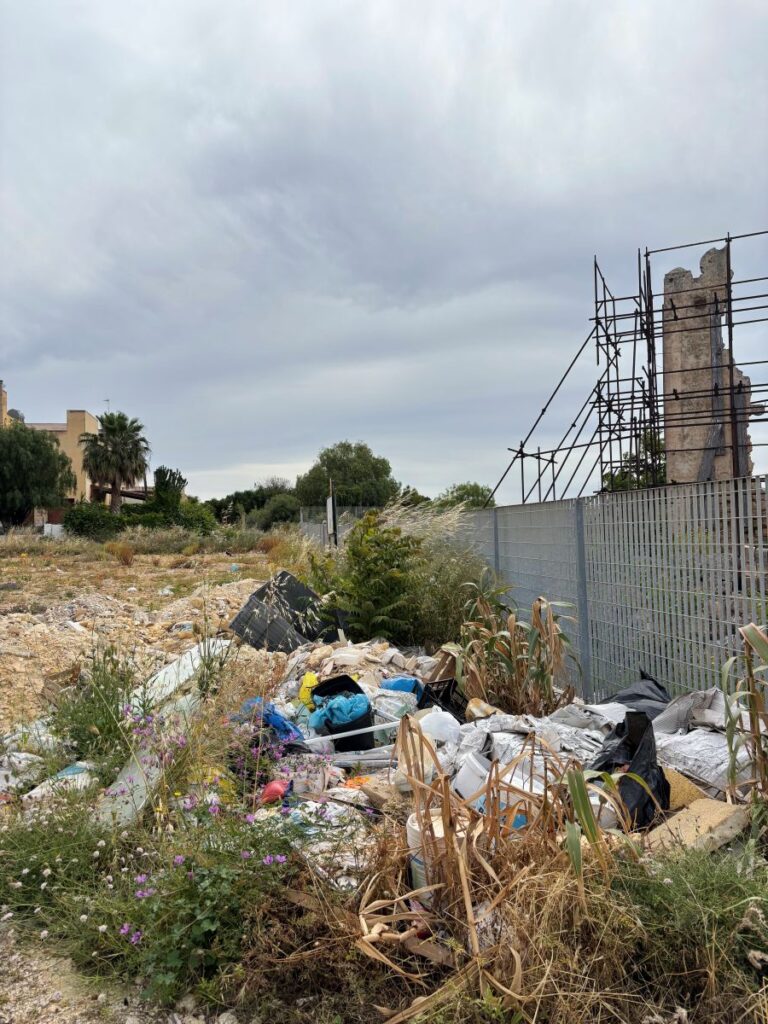
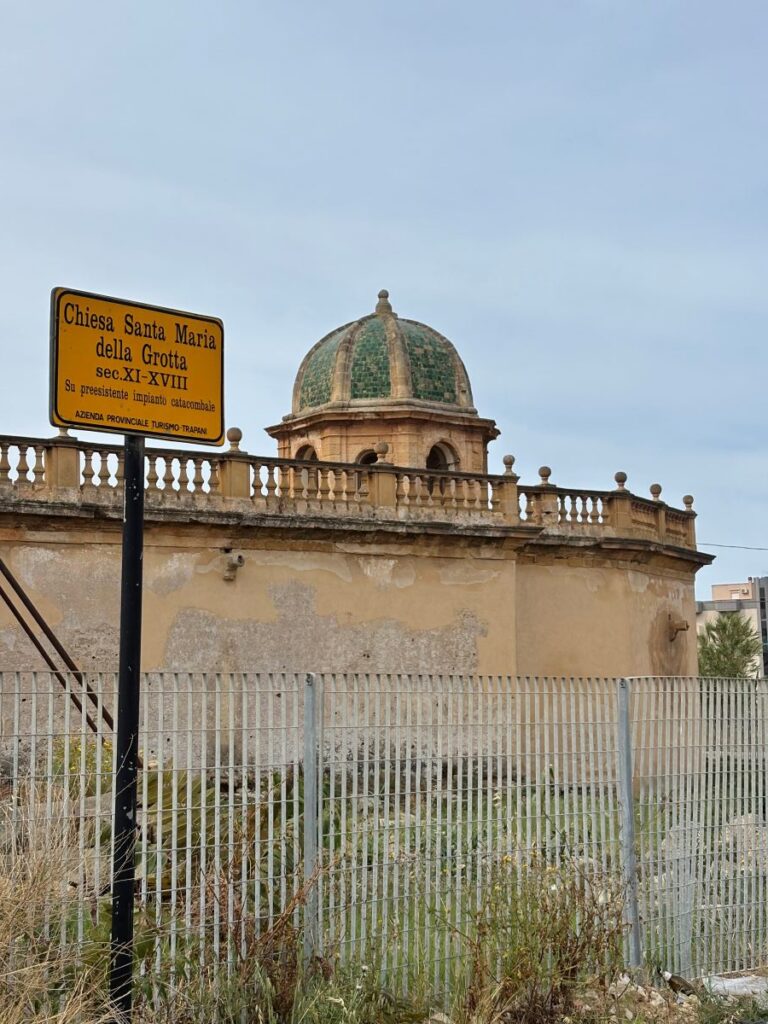
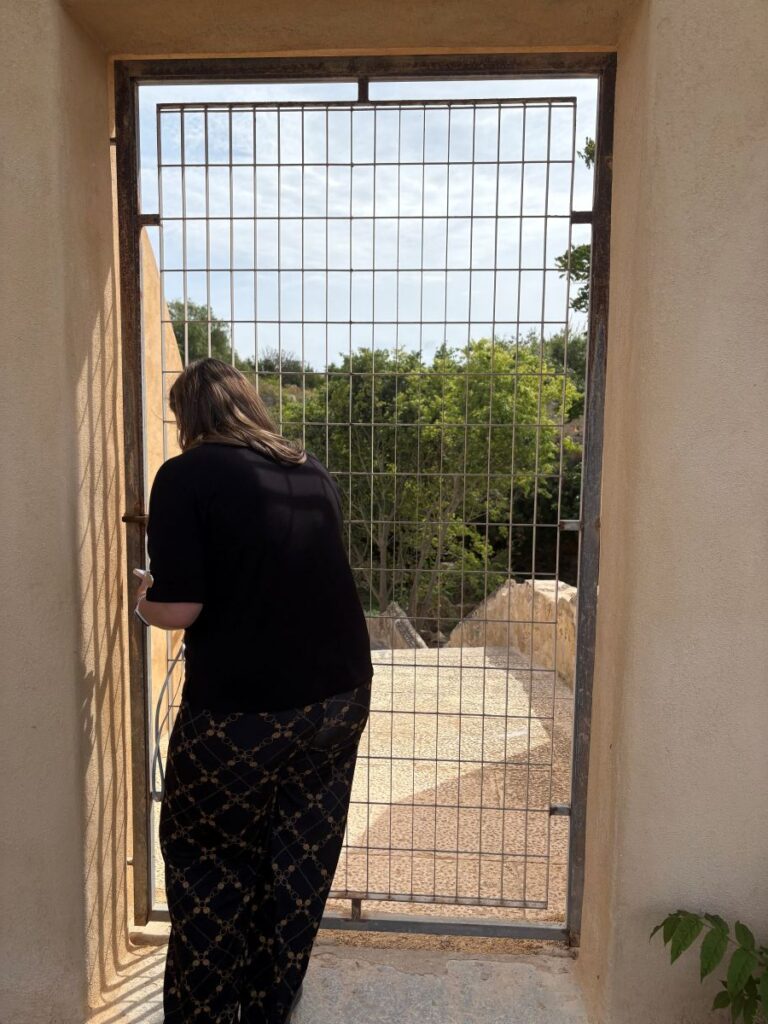
Once she has collected her flashlight and additional keys, we head towards another gate and down a long staircase to the first level below the street. Maria speaks not a word of English but I listen to her passionate explanations in Italian, of everything I see.
First & Second Layers
This site is home to five layers of history. The first we see is outside the church on the upper plateau. Here I see tombs carved right into the stone, straight down, part of a larger necropolis dating from the 2nd to 3rd centuries BC. The second stage is the Roman quarry which dates from the 2nd to 3th century AD. The steps I walk down to reach the entrance to the church is the entry into this quarry.
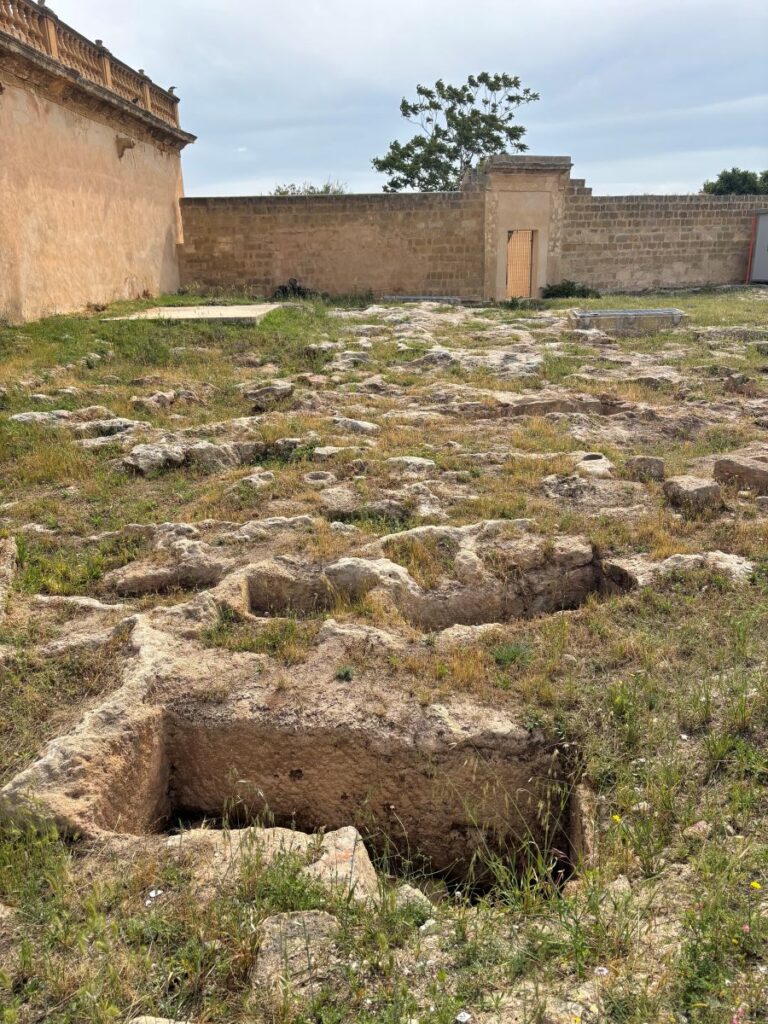
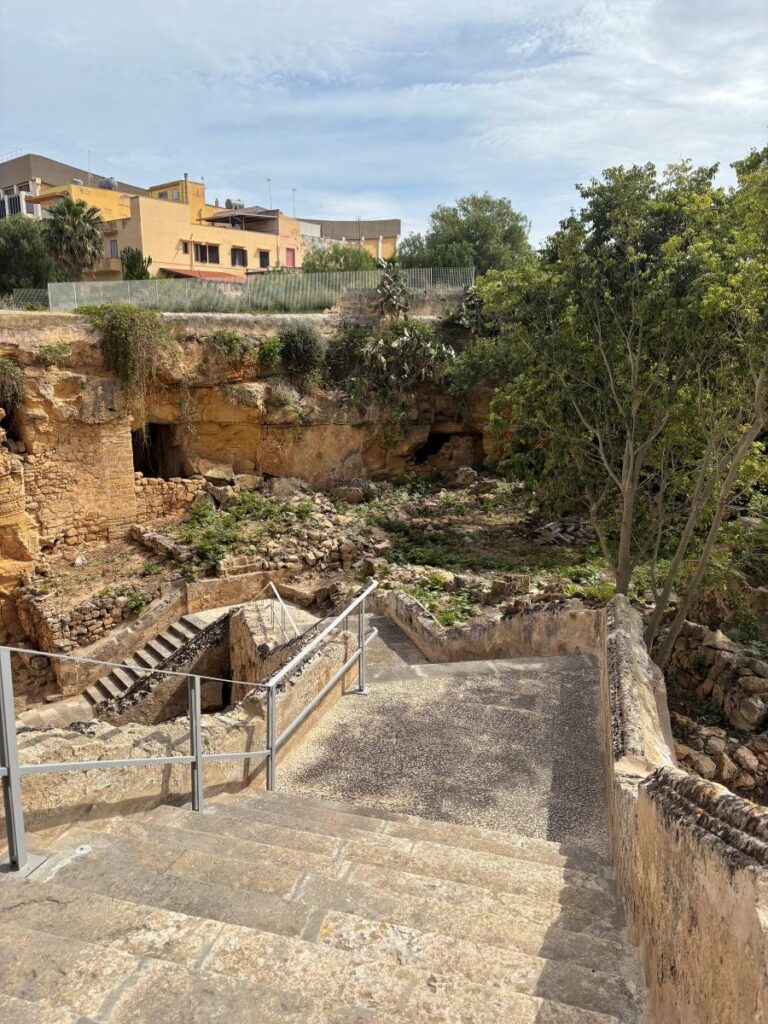
Third & Forth Layers
Now we enter the church itself and this is where the real journey begins. The third layer is located deep in caves under the church and dates back to the early Christians who turned this part of the quarry into a cemetery. Their tombs are marked by an arch above them, sometimes adorned with frescoes.
The fourth phase Maria shows me this day, is from the 11th century AD, when the Byzantine monks moved into the caves. After the Norman conquest of Sicily, a tower was built on the site destined to be an abbey. The monks adapted the pre-existing caves and burial chambers for their cult practices. Altars were built and seating created around the walls of the caves.
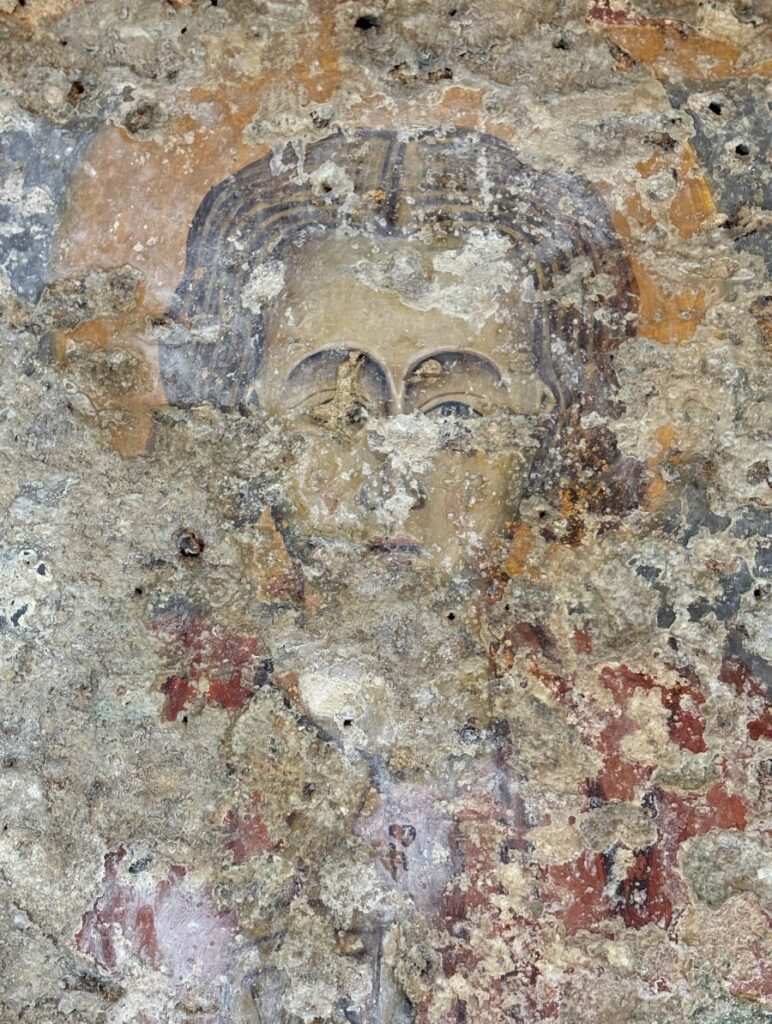
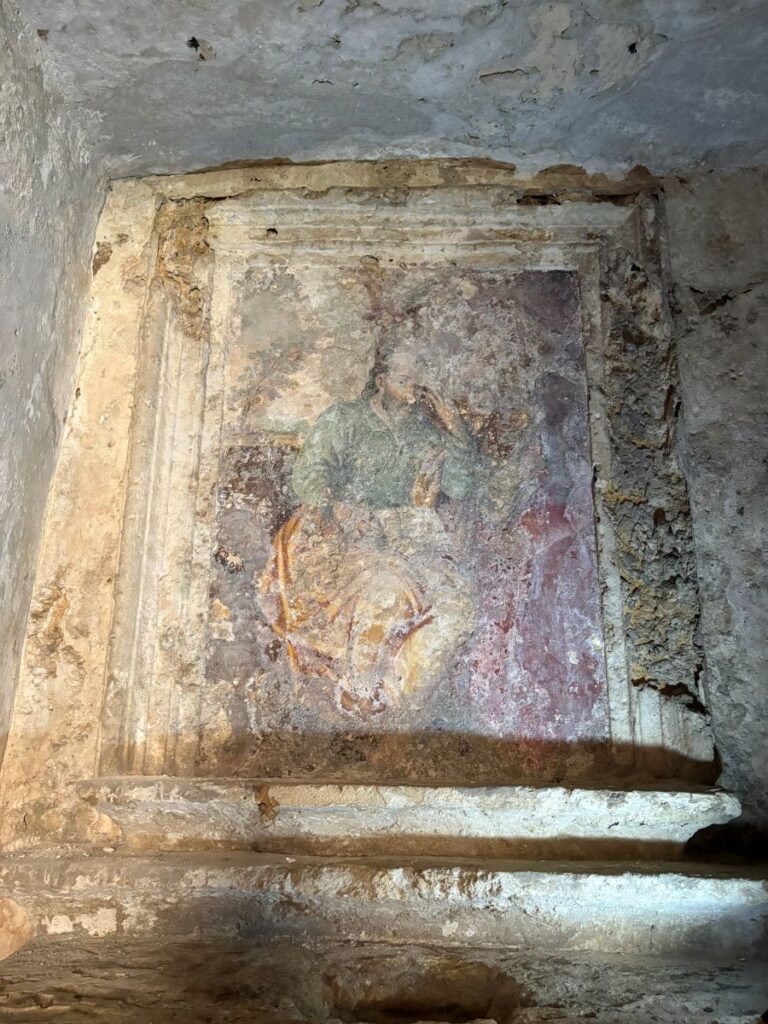
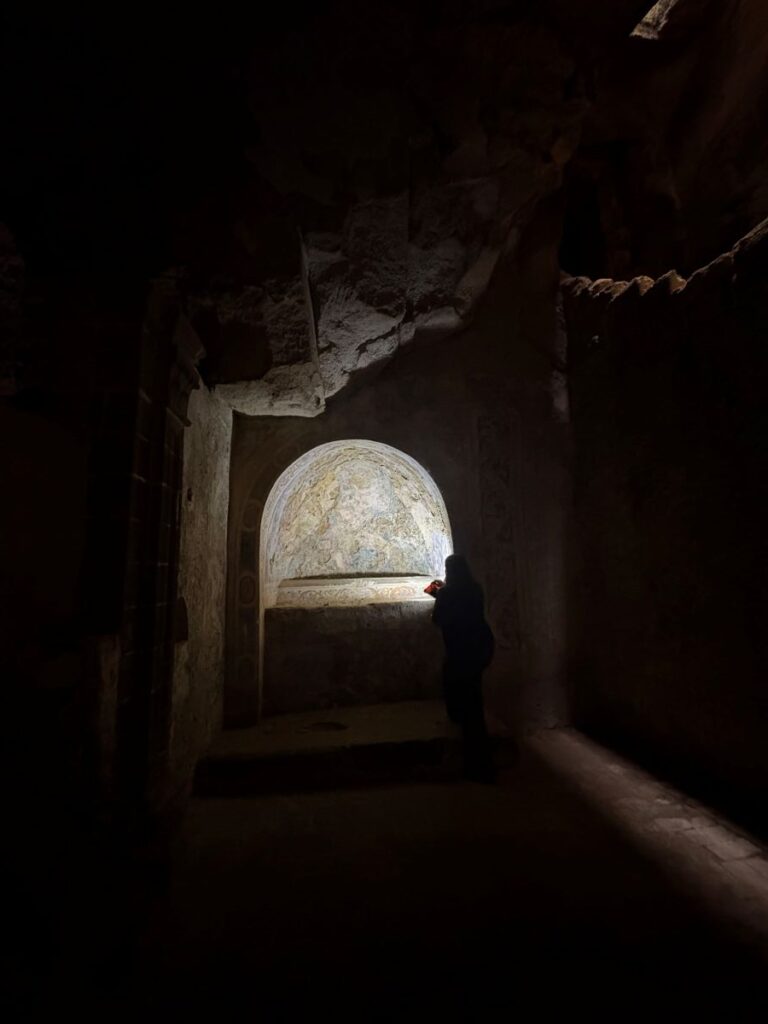
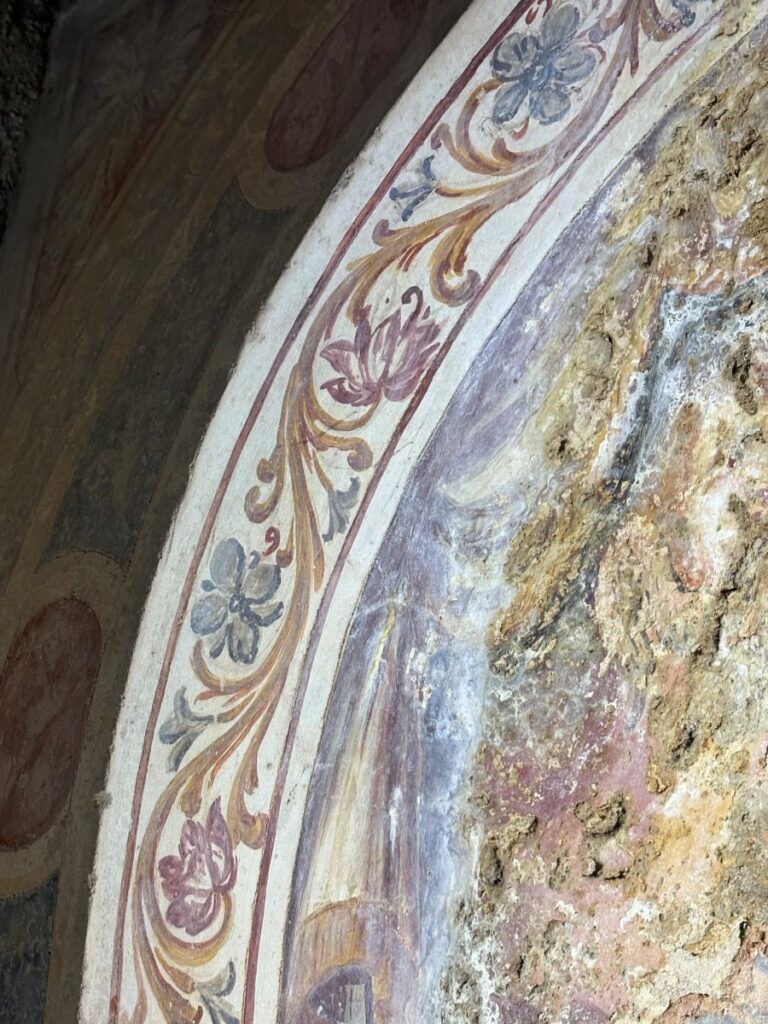
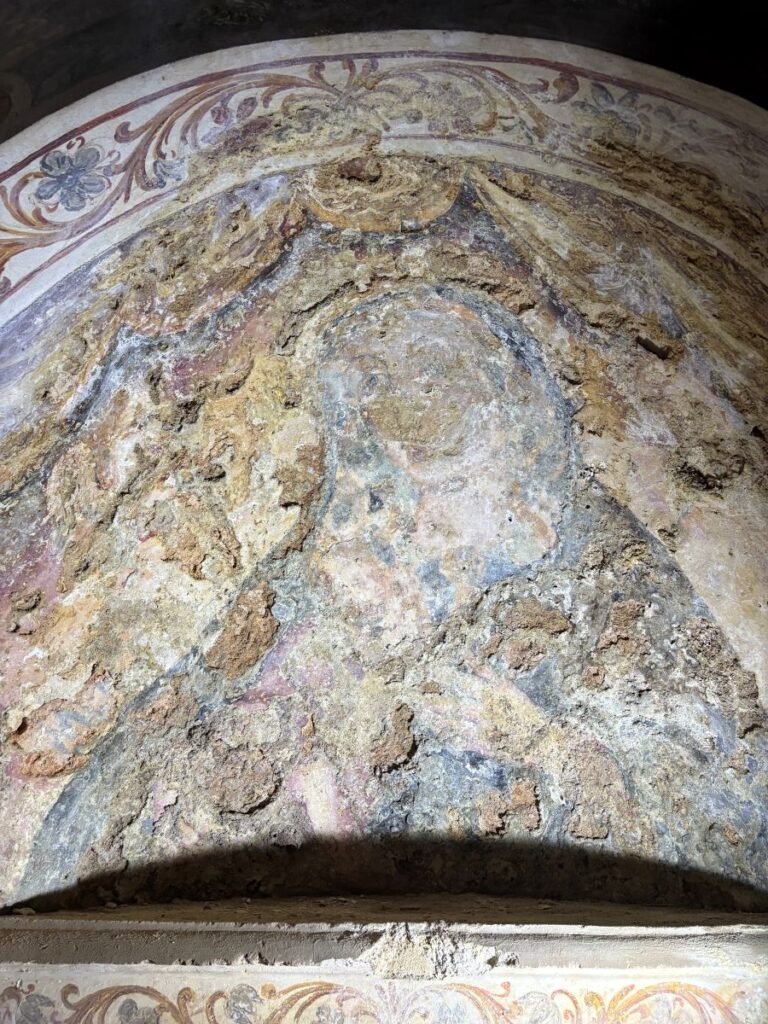
While nothing of the tower is left today, what we can see are the incredible frescoes that adorn the spaces above the underground altars. The most notable fresco is that of the Theory of Saints. Here Maria is able to point out St. James, St. Lucy and St. Bartholomew. By the end of the 13th century, the monks left these caves for unknown reasons.
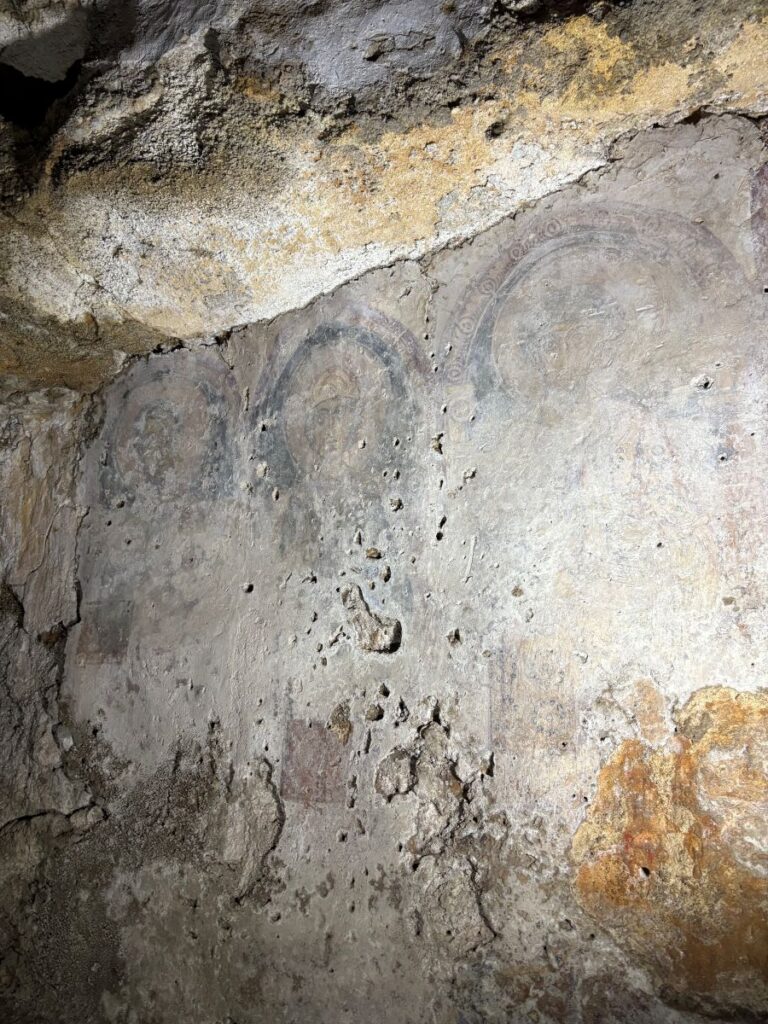
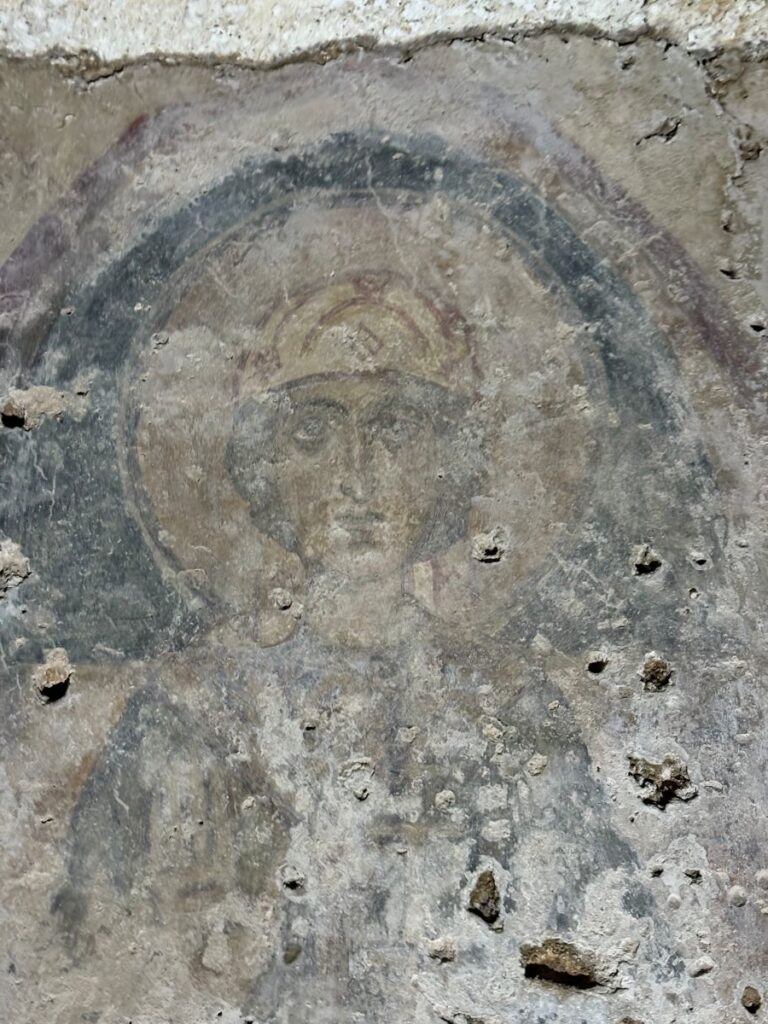
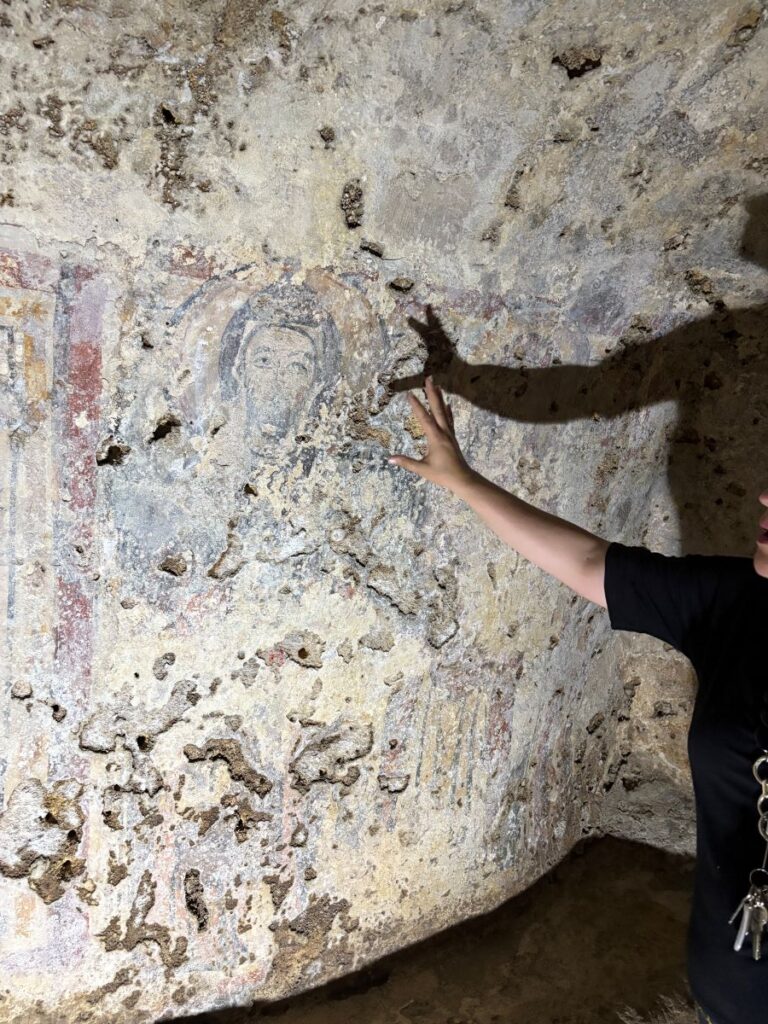
The Final Layer, the Church
It wasn’t until 1712 that the Baroque church, or what remains of it, was constructed. Today this church is a gorgeous broken masterpiece. Having succumbed to time and weather, it is covered with mould and algae. Near the altar up inside the nave I can see remnants of the original paint on plaster that would have filled the space with colour.
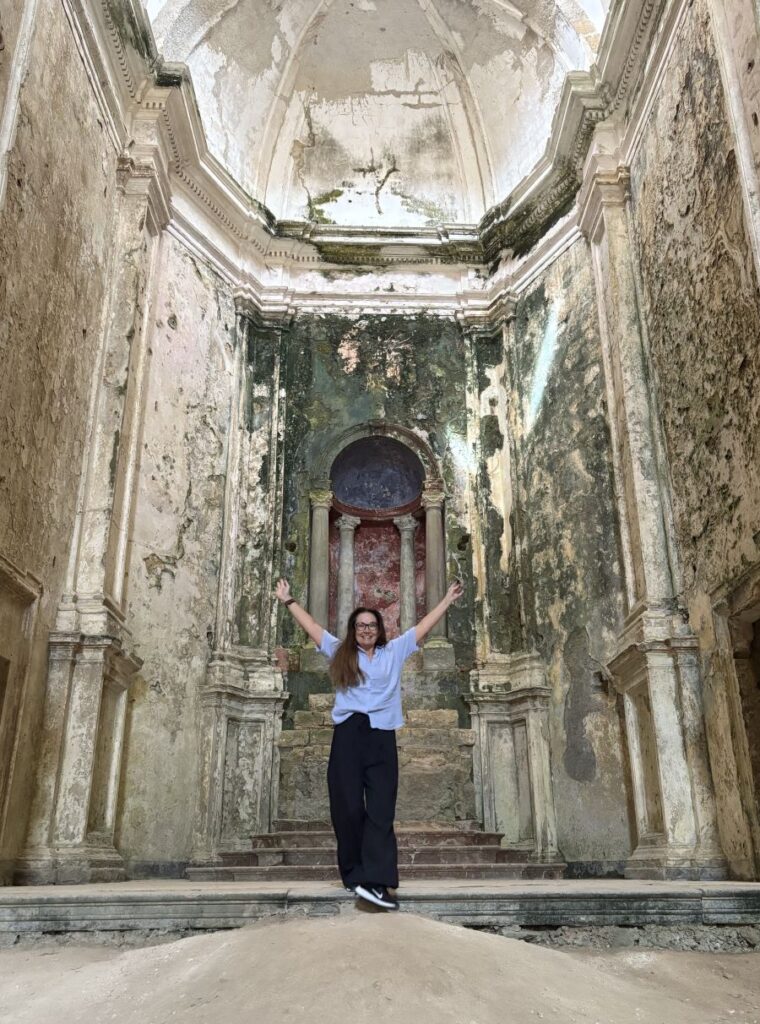
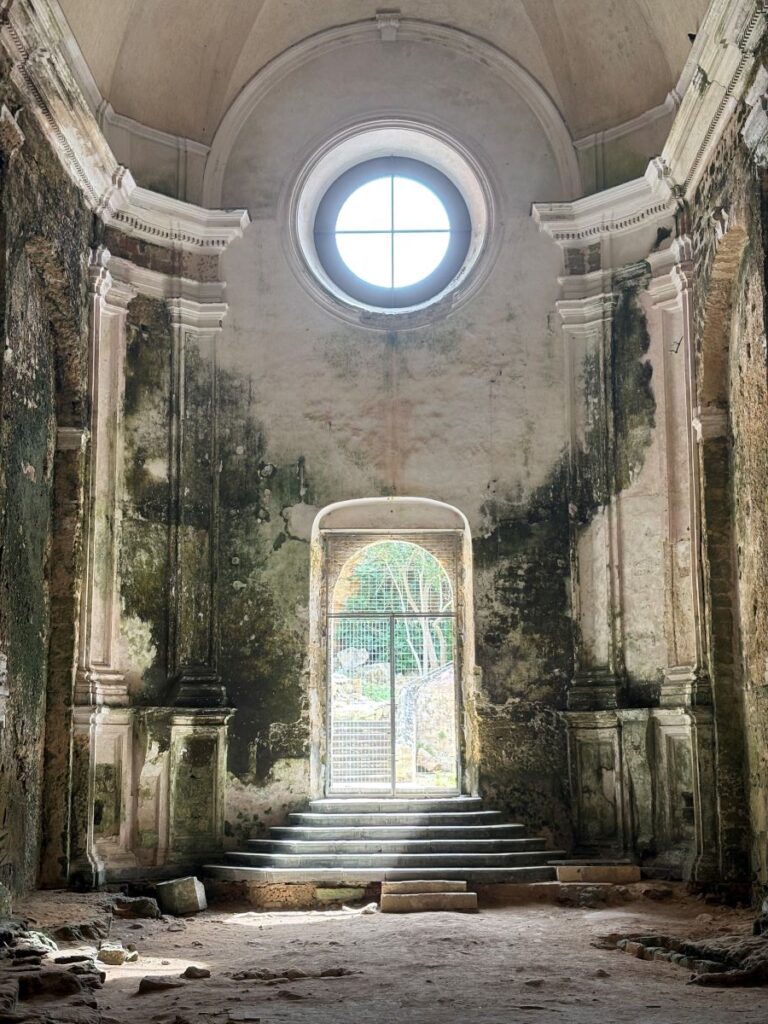
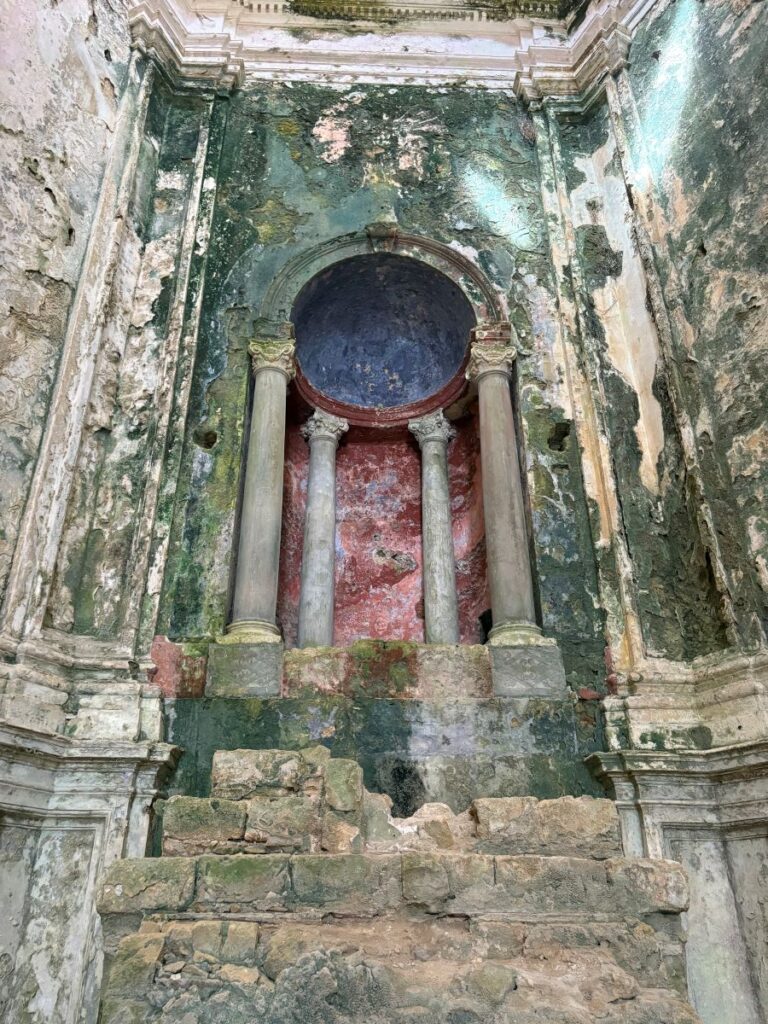
The Experience
What actually occurs when you visit this site is the following. Taking the staircase down inside the quarry brings you to the access point of the old church. The large metal doors at the entrance are opened. You step inside, pigeons fly from their roosts, disturbed by your unexpected presence.
The space is cool and quiet. As you proceed forward you are guided off to the left and right, and this is when you enter the caves. As you move forward through the dark cavernous spaces, one flashlight after another is lit, to show you the miracles before your eyes.
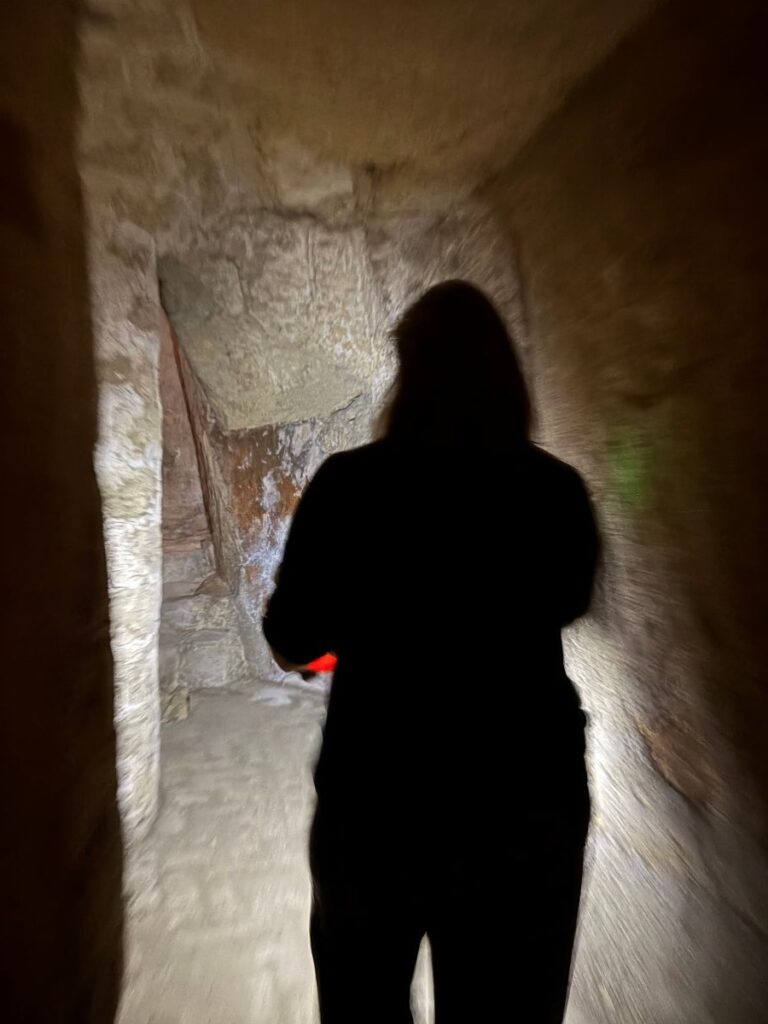
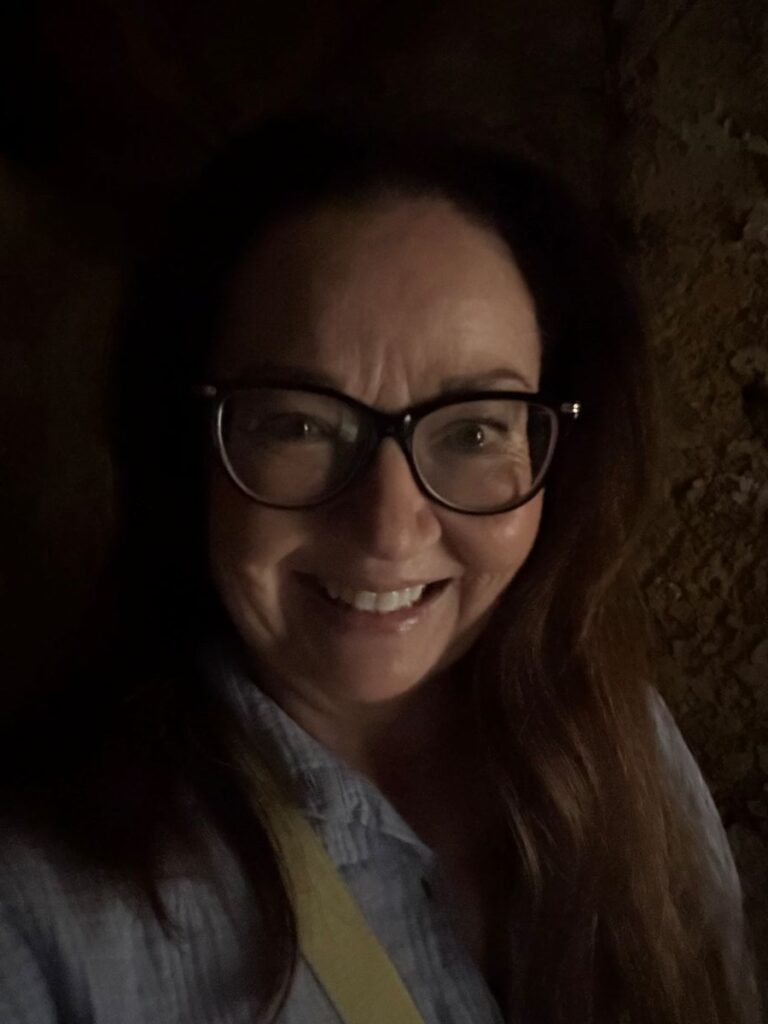
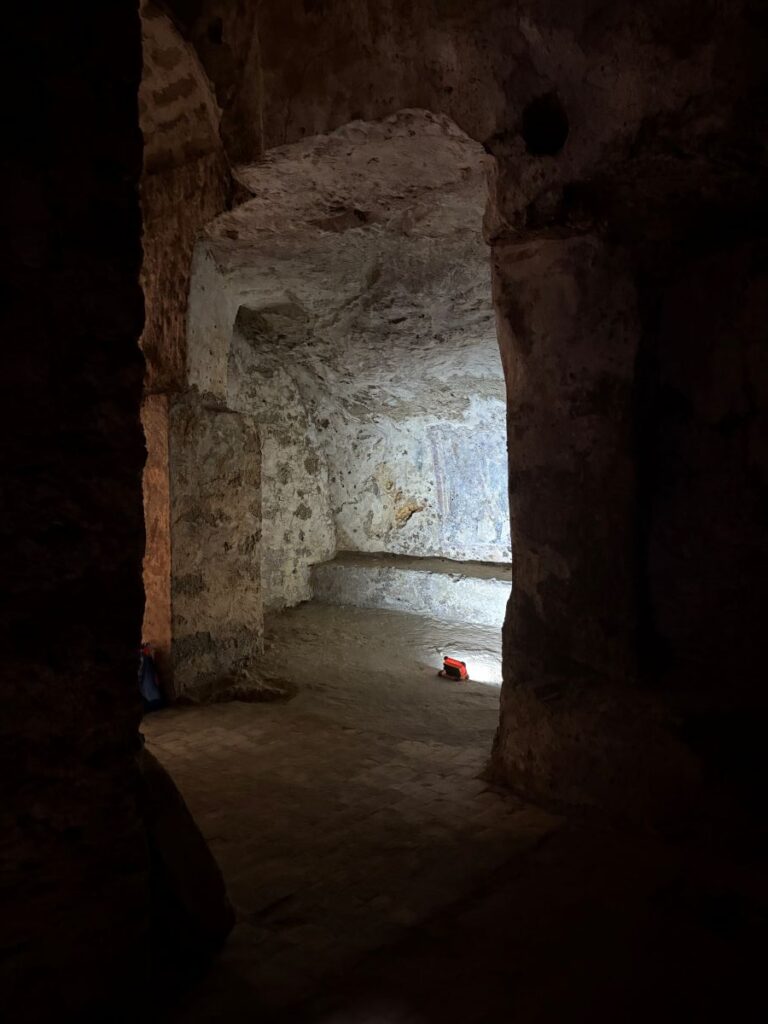
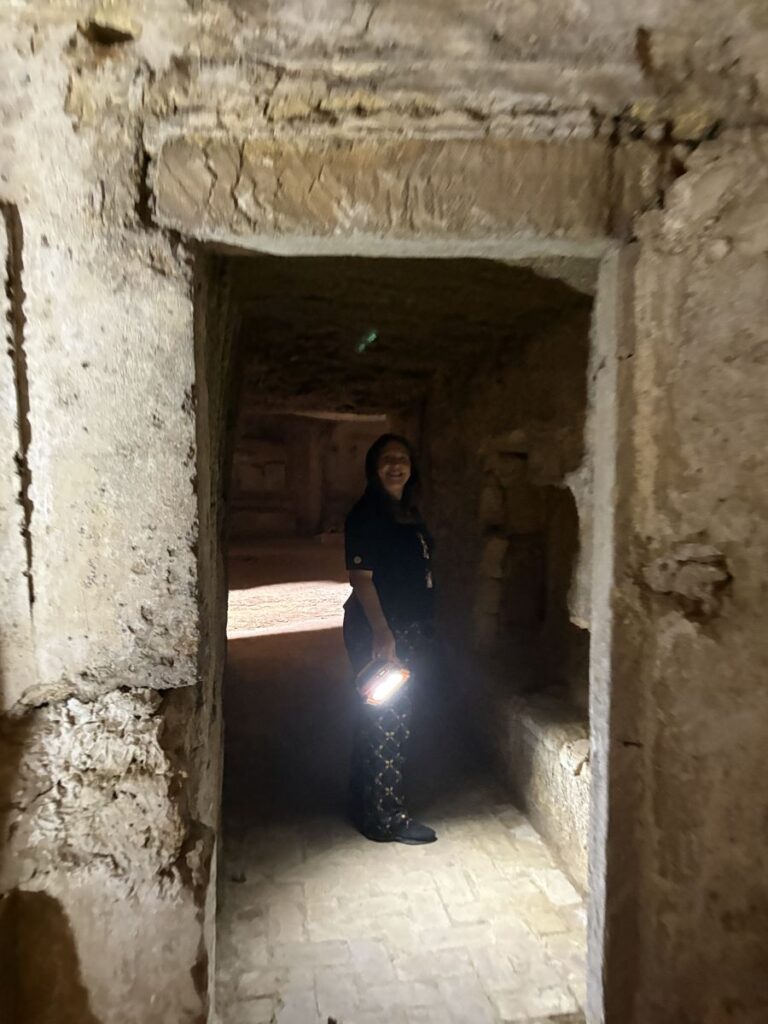
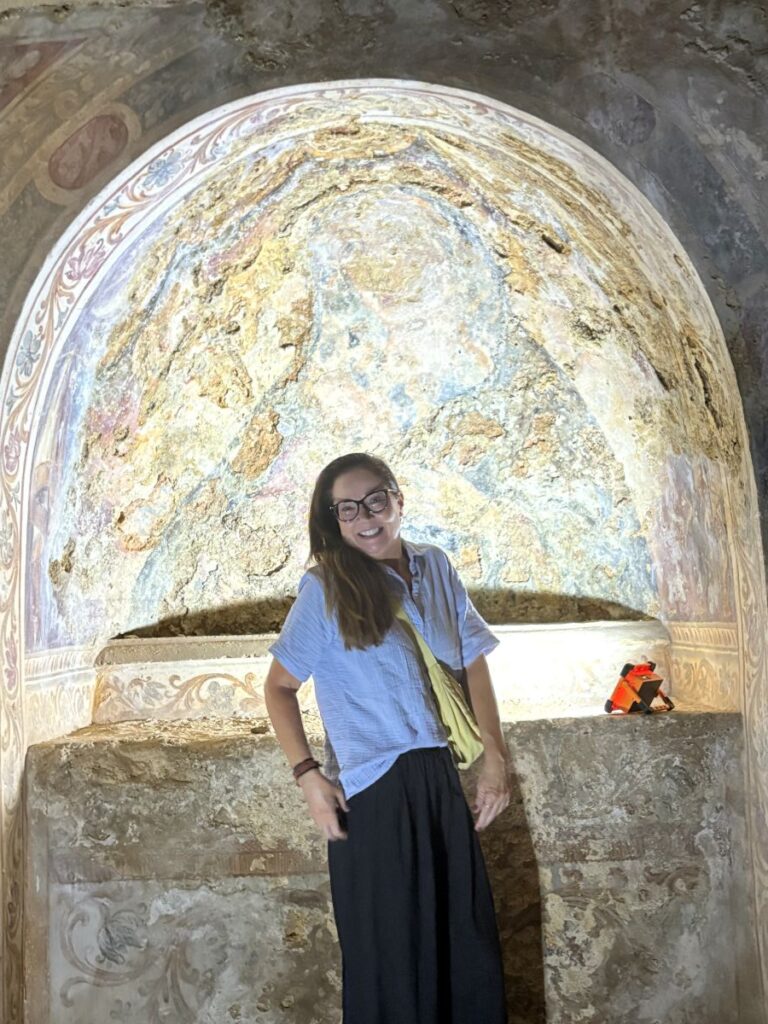
Possibly the most intriguing space is up at the front of the church, behind and underneath the altar and nave. This area is riddled with passages and caves and you can see old stone staircases that would have led directly upwards and into the sacred nave of the current day church.
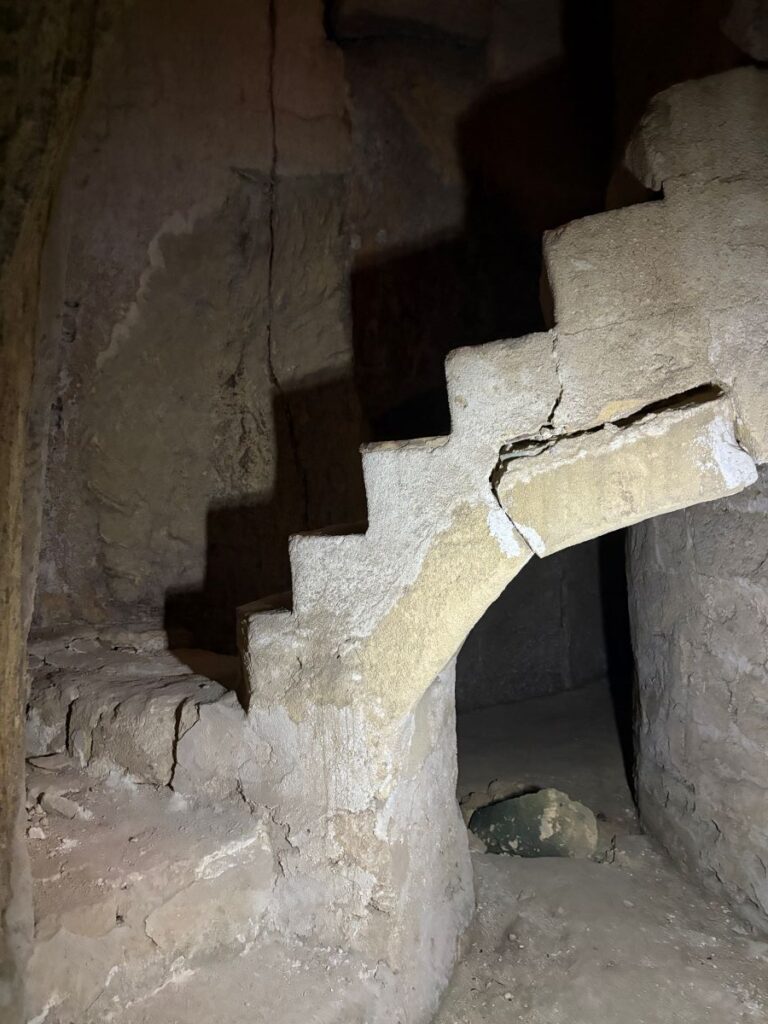
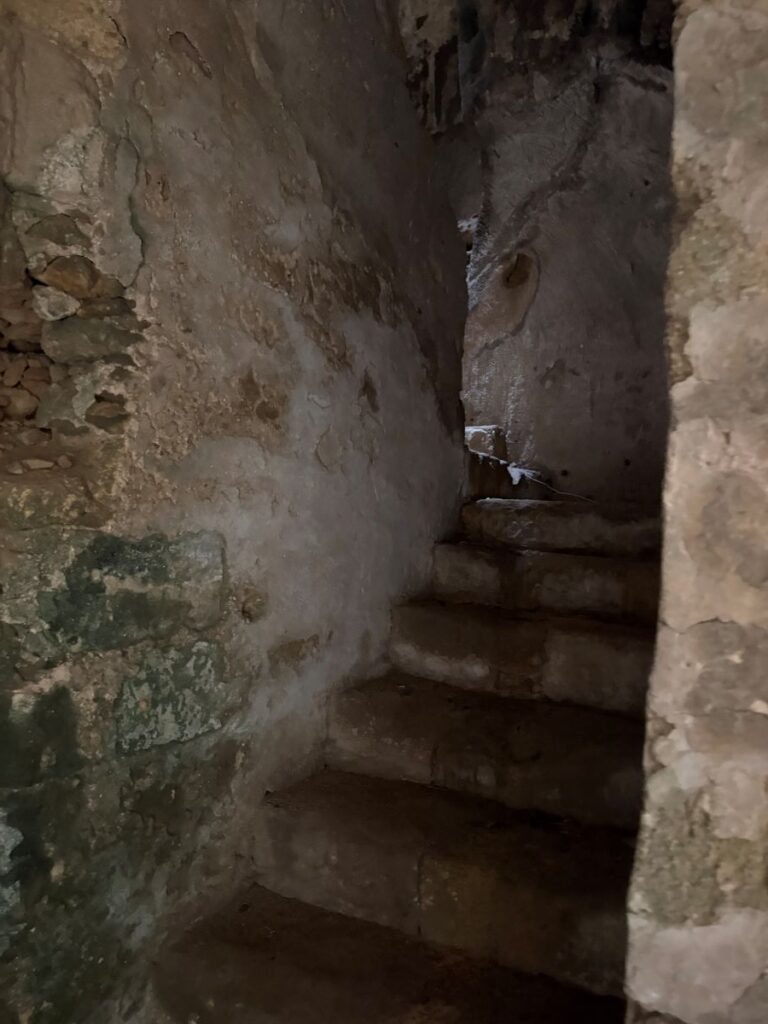
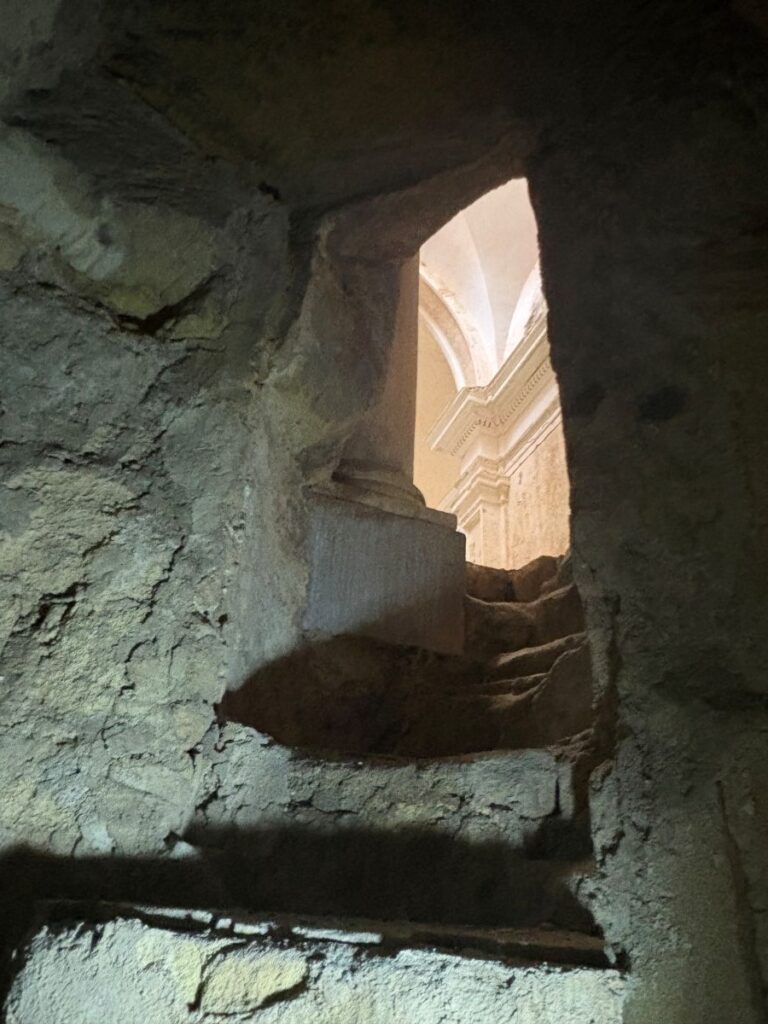
The entire experience, from start to finish is one of complete awe. Being lost in those underground passages, enclosed in darkness with only shadows dancing around you is beyond eerie. The sight of the ancient paintings and Byzantine frescoes is absolutely marvellous. I’m really just left without words having seen nothing like this before.
Contact Details
At the time of writing, the archaeological society in Marsala and the province seem to have extremely limited funds. At one time these sites were open for a few hours every weekend. Now it seems that they will only be open by pre-arranged appointment.
You could try to rock up between 10am and 12pm on either Saturday or Sunday, and hope that someone is there that is waiting for their guest. But that is risky. Instead call or text 351 48 49420. Failing that, go into the Marsala Archaeological Park and inquire at the front desk. Cost to enter each site is €4.
I have to wrap this post up now, however much I want to carry on typing about how incredible these two places are. I had no idea before I came to Marsala that anything like this existed. To say that these are some of the most memorable ancient sites I have ever experienced is nothing short of the truth. Call that number, make that appointment, you won’t be sorry.
